Solar System Essay for Students and Children
500+ words essay on solar system.
Our solar system consists of eight planets that revolve around the Sun, which is central to our solar system . These planets have broadly been classified into two categories that are inner planets and outer planets. Mercury, Venus, Earth, and Mars are called inner planets. The inner planets are closer to the Sun and they are smaller in size as compared to the outer planets. These are also referred to as the Terrestrial planets. And the other four Jupiter, Saturn, Uranus, and Neptune are termed as the outer planets. These four are massive in size and are often referred to as Giant planets.

The smallest planet in our solar system is Mercury, which is also closest to the Sun. The geological features of Mercury consist of lobed ridges and impact craters. Being closest to the Sun the Mercury’s temperature sores extremely high during the day time. Mercury can go as high as 450 degree Celsius but surprisingly the nights here are freezing cold. Mercury has a diameter of 4,878 km and Mercury does not have any natural satellite like Earth.
Venus is also said to be the hottest planet of our solar system. It has a toxic atmosphere that always traps heat. Venus is also the brightest planet and it is visible to the naked eye. Venus has a thick silicate layer around an iron core which is also similar to that of Earth. Astronomers have seen traces of internal geological activity on Venus planet. Venus has a diameter of 12,104 km and it is just like Mars. Venus also does not have any natural satellite like Earth.
Earth is the largest inner planet. It is covered two-third with water. Earth is the only planet in our solar system where life is possible. Earth’s atmosphere which is rich in nitrogen and oxygen makes it fit for the survival of various species of flora and fauna. However human activities are negatively impacting its atmosphere. Earth has a diameter of 12,760 km and Earth has one natural satellite that is the moon.
Get the huge list of more than 500 Essay Topics and Ideas
Mars is the fourth planet from the Sun and it is often referred to as the Red Planet. This planet has a reddish appeal because of the iron oxide present on this planet. Mars planet is a cold planet and it has geological features similar to that of Earth. This is the only reason why it has captured the interest of astronomers like no other planet. This planet has traces of frozen ice caps and it has been found on the planet. Mars has a diameter of 6,787 km and it has two natural satellites.
It is the largest planet in our solar system. Jupiter has a strong magnetic field . Jupiter largely consists of helium and hydrogen. It has a Great Red Spot and cloud bands. The giant storm is believed to have raged here for hundreds of years. Jupiter has a diameter of 139,822 km and it has as many as 79 natural satellites which are much more than of Earth and Mars.
Saturn is the sixth planet from the Sun. It is also known for its ring system and these rings are made of tiny particles of ice and rock. Saturn’s atmosphere is quite like that of Jupiter because it is also largely composed of hydrogen and helium. Saturn has a diameter of 120,500 km and It has 62 natural satellites that are mainly composed of ice. As compare with Jupiter it has less satellite.
Uranus is the seventh planet from the Sun. It is the lightest of all the giant and outer planets. Presence of Methane in the atmosphere this Uranus planet has a blue tint. Uranus core is colder than the other giant planets and the planet orbits on its side. Uranus has a diameter of 51,120 km and it has 27 natural satellites.
Neptune is the last planet in our solar system. It is also the coldest of all the planets. Neptune is around the same size as the Uranus. And it is much more massive and dense. Neptune’s atmosphere is composed of helium, hydrogen, methane, and ammonia and it experiences extremely strong winds. It is the only planet in our solar system which is found by mathematical prediction. Neptune has a diameter of 49,530 km and it has 14 natural satellites which are more than of Earth and Mars.
Scientists and astronomers have been studying our solar system for centuries and then after they will findings are quite interesting. Various planets that form a part of our solar system have their own unique geological features and all are different from each other in several ways.

Customize your course in 30 seconds
Which class are you in.

- Travelling Essay
- Picnic Essay
- Our Country Essay
- My Parents Essay
- Essay on Favourite Personality
- Essay on Memorable Day of My Life
- Essay on Knowledge is Power
- Essay on Gurpurab
- Essay on My Favourite Season
- Essay on Types of Sports
Leave a Reply Cancel reply
Your email address will not be published. Required fields are marked *
Download the App


Essay on Solar System in English (150, 200, 250, 500 Words)
Here, we’ve presented essays on “Solar System” in 150, 200, 250 & 500 word samples. All the essays will be helpful for students of all classes i.e. 1, 2, 3, 4, 5, 6, 7, 8, 9, 10, 11 & class 12.
Table of Contents
Essay on Solar System in 150 Words
Introduction.
The Solar System, our cosmic neighborhood, consists of the Sun and all celestial objects gravitationally bound to it. It includes eight planets, their moons, asteroids, comets, and dwarf planets like Pluto. Understanding the Solar System is crucial for unraveling the mysteries of the universe.
Overview of the Solar System
The Sun, a giant ball of hot gases, dominates the Solar System. Its gravitational pull governs the motion of planets, maintaining the delicate balance of our cosmic dance. The planets, divided into inner rocky planets and outer gas giants, orbit the Sun in elliptical paths.
The Sun: Our Radiant Star
At the heart of the Solar System lies the Sun, a dazzling sphere of burning gases. It provides heat and light, nurturing life on Earth. Its immense energy powers the entire system, driving weather patterns, ocean currents, and life cycles.
Planets: Worlds Beyond Earth
The planets, diverse in size and composition, offer a glimpse into the vastness of space. From Mercury’s scorching surface to Neptune’s icy depths, each planet holds its own mysteries waiting to be explored.
In conclusion, the Solar System captivates our imagination with its beauty and complexity. Studying its dynamics not only enriches our understanding of the cosmos but also sheds light on our own place in the universe. As we continue to explore and discover, the Solar System remains a beacon of wonder and exploration for humanity.

Solar System Essay in 200 Words
The Solar System, comprising the Sun and its family of celestial bodies, is a fascinating subject of study. It encompasses planets, moons, asteroids, comets, and more, offering insights into the vastness of space and the wonders it holds.
At the center of the Solar System shines the Sun, a colossal star radiating light and heat. Its gravitational force governs the orbits of planets, maintaining harmony in this cosmic dance. The planets, categorized into rocky and gas giants, orbit the Sun in elliptical paths, each with its unique characteristics and mysteries.
The Sun: Our Luminous Star
The Sun, a luminous ball of hot gases, is the primary source of energy for the Solar System. Its immense heat and light sustain life on Earth, driving weather patterns and supporting ecosystems. Understanding the Sun’s dynamics is crucial for predicting solar phenomena and safeguarding our technological infrastructure.
The planets, ranging from the fiery Mercury to the distant Neptune, offer a diverse array of landscapes and atmospheres. Each planet holds clues to its formation and evolution, providing valuable insights into the processes shaping our Solar System.
In conclusion, the Solar System serves as a window into the complexities of the universe. Studying its myriad components not only expands our knowledge of astronomy but also fosters a deeper appreciation for the beauty and intricacy of cosmic phenomena. As we continue to explore and unravel its mysteries, the Solar System remains an endless source of wonder and inspiration for humanity’s quest for understanding.
Essay Writing on Solar System in 250 Words
The Solar System, formed approximately 4.6 billion years ago, is a captivating realm comprising the Sun, eight planets, and numerous smaller celestial bodies. Its study not only unravels the mysteries of our cosmic origins but also holds practical implications for space exploration and understanding Earth’s place in the universe.
The Sun: Our Celestial Furnace
At the heart of the Solar System lies the Sun, a luminous sphere of hot plasma. It contains 99.86% of the Solar System’s mass and radiates energy, influencing the climate and sustaining life on Earth. With a surface temperature of approximately 5,500 degrees Celsius and a core temperature exceeding 15 million degrees Celsius, the Sun’s dynamics drive solar phenomena such as sunspots, solar flares, and coronal mass ejections.
Planets: The Diversity of Worlds
The planets, diverse in size, composition, and atmosphere, orbit the Sun in elliptical paths. Among them, Jupiter reigns as the largest planet, while Mercury holds the title for the smallest. Notably, Earth is the only known planet to support life, owing to its moderate climate, liquid water, and protective magnetic field.
Moons and Beyond
Beyond the planets, the Solar System hosts an array of moons, asteroids, comets, and dwarf planets. For instance, Saturn boasts an impressive collection of 82 moons, including Titan, the second-largest moon in the Solar System. Comets like Halley’s Comet periodically visit the inner Solar System, providing valuable insights into the early stages of planetary formation.
Exploration and Discoveries
Humanity’s quest to explore the Solar System has led to groundbreaking discoveries and technological advancements. Missions like Voyager, Cassini, and New Horizons have provided unprecedented views of distant worlds and expanded our understanding of planetary geology, atmospheres, and magnetospheres.
In conclusion, the Solar System offers a vast playground for scientific inquiry and exploration. By studying its components and phenomena, we gain invaluable knowledge about the origins and evolution of celestial bodies, as well as the potential for extraterrestrial life. As technology advances, our understanding of the Solar System will continue to deepen, paving the way for future discoveries and missions beyond our cosmic neighborhood.
Writing an Essay on Solar System in 500 Words
The Solar System, born around 4.6 billion years ago from the gravitational collapse of a giant molecular cloud, is a complex and wondrous entity comprising the Sun, eight planets, moons, asteroids, comets, and dwarf planets. Its study is not only pivotal for understanding our cosmic origins but also for informing future space exploration endeavors.
The Sun: Our Stellar Powerhouse
At the heart of the Solar System, the Sun reigns as a colossal ball of hot plasma, comprising about 99.86% of its total mass. With a surface temperature of approximately 5,500 degrees Celsius and a core temperature exceeding 15 million degrees Celsius, the Sun generates energy through nuclear fusion processes. This energy radiates into space, influencing the climate and sustaining life on Earth. Solar phenomena such as sunspots, solar flares, and coronal mass ejections are manifestations of the Sun’s dynamic behavior.
The planets, diverse in size, composition, and atmosphere, orbit the Sun in elliptical paths. The inner rocky planets — Mercury, Venus, Earth, and Mars — are characterized by solid surfaces and relatively thin atmospheres. In contrast, the outer gas giants — Jupiter, Saturn, Uranus, and Neptune — are massive spheres primarily composed of hydrogen and helium. Jupiter, the largest planet, possesses a diameter of about 143,000 kilometers, while Neptune, the farthest planet from the Sun, orbits at an average distance of approximately 4.5 billion kilometers.
Moons, Asteroids, and Comets
Beyond the planets, the Solar System hosts a myriad of moons, asteroids, comets, and dwarf planets. For instance, Jupiter boasts a retinue of at least 79 moons, including the massive Ganymede, which exceeds the planet Mercury in size. Asteroids, rocky remnants from the formation of the Solar System, orbit the Sun primarily in the asteroid belt between Mars and Jupiter. Comets, icy bodies originating from the Kuiper Belt and Oort Cloud, periodically visit the inner Solar System, offering insights into the early stages of planetary formation.
Historical Exploration and Discoveries
Humanity’s fascination with the Solar System dates back millennia, with ancient civilizations observing and documenting celestial phenomena. However, it wasn’t until the advent of modern astronomy that significant discoveries were made. In 1543, Nicolaus Copernicus proposed a heliocentric model, placing the Sun at the center of the Solar System. Subsequent observations by astronomers such as Galileo Galilei and Johannes Kepler provided further evidence supporting this model, revolutionizing our understanding of the cosmos.
Space Exploration Era
The mid-20th century ushered in the era of space exploration, marked by milestone achievements such as the launch of Sputnik 1 by the Soviet Union in 1957 and the Apollo 11 moon landing by NASA in 1969. Since then, numerous robotic missions have been launched to explore the planets, moons, and other celestial bodies of the Solar System. These missions, including Voyager, Cassini, and New Horizons, have yielded unprecedented insights into planetary geology, atmospheres, and magnetospheres.
Current and Future Endeavors
In recent years, space agencies worldwide have embarked on ambitious missions to further explore the Solar System. NASA’s Mars rovers, including Curiosity and Perseverance, continue to investigate the Martian surface for signs of past microbial life and potential habitability. The European Space Agency’s Rosetta mission successfully rendezvoused with comet 67P/Churyumov–Gerasimenko, providing valuable data on cometary composition and evolution.
In conclusion, the Solar System stands as a testament to the awe-inspiring beauty and complexity of the cosmos. Through centuries of observation, exploration, and scientific inquiry, humanity has gained a deeper understanding of its celestial surroundings. As technology advances and our thirst for knowledge grows, the exploration of the Solar System will undoubtedly continue to be a focal point of scientific discovery and exploration, unlocking the mysteries of our cosmic neighborhood and beyond.
Related Posts
Essay on zoo in english (150, 200, 250, 500 words).
- May 26, 2024
Essay on Zero Hunger in English (150, 200, 250, 500 Words)
Leave a reply cancel reply.
Your email address will not be published. Required fields are marked *
Name *
Email *
Save my name, email, and website in this browser for the next time I comment.
Post Comment
- CBSE Class 10th
- CBSE Class 12th
- UP Board 10th
- UP Board 12th
- Bihar Board 10th
- Bihar Board 12th
Top Schools
- Top Schools in India
- Top Schools in Delhi
- Top Schools in Mumbai
- Top Schools in Chennai
- Top Schools in Hyderabad
- Top Schools in Kolkata
- Top Schools in Pune
- Top Schools in Bangalore
Products & Resources
- JEE Main Knockout April
- Free Sample Papers
- Free Ebooks
- RD Sharma Solutions
- Navodaya Vidyalaya Admission 2024-25
NCERT Study Material
- NCERT Notes
- NCERT Books
- NCERT Syllabus
- NCERT Solutions
- NCERT Solutions for Class 12
- NCERT Solutions for Class 11
- NCERT solutions for Class 10
- JEE Main Exam
- JEE Advanced Exam
- BITSAT Exam
- View All Engineering Exams
- Colleges Accepting B.Tech Applications
- Top Engineering Colleges in India
- Engineering Colleges in India
- Engineering Colleges in Tamil Nadu
- Engineering Colleges Accepting JEE Main
- Top IITs in India
- Top NITs in India
- Top IIITs in India
- JEE Main College Predictor
- JEE Main Rank Predictor
- MHT CET College Predictor
- AP EAMCET College Predictor
- GATE College Predictor
- KCET College Predictor
- JEE Advanced College Predictor
- View All College Predictors
- JEE Advanced Cutoff
- JEE Main Cutoff
- GATE Registration 2025
- JEE Main Syllabus 2025
- Download E-Books and Sample Papers
- Compare Colleges
- B.Tech College Applications
- JEE Main Question Papers
- View All Management Exams
Colleges & Courses
- Top MBA Colleges in India
- MBA College Admissions
- MBA Colleges in India
- Top IIMs Colleges in India
- Top Online MBA Colleges in India
- MBA Colleges Accepting XAT Score
- BBA Colleges in India
- XAT College Predictor 2025
- SNAP College Predictor
- NMAT College Predictor
- MAT College Predictor 2024
- CMAT College Predictor 2025
- CAT Percentile Predictor 2024
- CAT 2024 College Predictor
- Top MBA Entrance Exams 2024
- SNAP Registration
- GD Topics for MBA
- CAT 2024 Admit Card
- Download Helpful Ebooks
- List of Popular Branches
- QnA - Get answers to your doubts
- IIM Fees Structure
- AIIMS Nursing
- Top Medical Colleges in India
- Top Medical Colleges in India accepting NEET Score
- Medical Colleges accepting NEET
- List of Medical Colleges in India
- List of AIIMS Colleges In India
- Medical Colleges in Maharashtra
- Medical Colleges in India Accepting NEET PG
- NEET College Predictor
- NEET PG College Predictor
- NEET MDS College Predictor
- NEET Rank Predictor
- DNB PDCET College Predictor
- NEET Syllabus 2025
- NEET Study Material 2024
- NEET Cut off
- NEET Exam Date 2025
- Download Helpful E-books
- Colleges Accepting Admissions
- Top Law Colleges in India
- Law College Accepting CLAT Score
- List of Law Colleges in India
- Top Law Colleges in Delhi
- Top NLUs Colleges in India
- Top Law Colleges in Chandigarh
- Top Law Collages in Lucknow
Predictors & E-Books
- CLAT College Predictor
- MHCET Law ( 5 Year L.L.B) College Predictor
- AILET College Predictor
- Sample Papers
- Compare Law Collages
- Careers360 Youtube Channel
- CLAT Syllabus 2025
- Free CLAT Practice Test
- NID DAT Exam
- Pearl Academy Exam
Predictors & Articles
- NIFT College Predictor
- UCEED College Predictor
- NID DAT College Predictor
- NID DAT 2025
- NID DAT Syllabus 2025
- Design Colleges in India
- Top NIFT Colleges in India
- Fashion Design Colleges in India
- Top Interior Design Colleges in India
- Top Graphic Designing Colleges in India
- Fashion Design Colleges in Delhi
- Fashion Design Colleges in Mumbai
- Top Interior Design Colleges in Bangalore
- NIFT Cutoff
- NIFT Fees Structure
- NIFT Syllabus 2025
- Free Design E-books
- List of Branches
- Careers360 Youtube channel
- IPU CET BJMC 2024
- JMI Mass Communication Entrance Exam 2024
- IIMC Entrance Exam 2024
- MICAT Exam 2025
- Media & Journalism colleges in Delhi
- Media & Journalism colleges in Bangalore
- Media & Journalism colleges in Mumbai
- List of Media & Journalism Colleges in India
- CA Intermediate
- CA Foundation
- CS Executive
- CS Professional
- Difference between CA and CS
- Difference between CA and CMA
- CA Full form
- CMA Full form
- CS Full form
- CA Salary In India
Top Courses & Careers
- Bachelor of Commerce (B.Com)
- Master of Commerce (M.Com)
- Company Secretary
- Cost Accountant
- Charted Accountant
- Credit Manager
- Financial Advisor
- Top Commerce Colleges in India
- Top Government Commerce Colleges in India
- Top Private Commerce Colleges in India
- Top M.Com Colleges in Mumbai
- Top B.Com Colleges in India
- IT Colleges in Tamil Nadu
- IT Colleges in Uttar Pradesh
- MCA Colleges in India
- BCA Colleges in India
Quick Links
- Information Technology Courses
- Programming Courses
- Web Development Courses
- Data Analytics Courses
- Big Data Analytics Courses
- RUHS Pharmacy Admission Test
- Top Pharmacy Colleges in India
- Pharmacy Colleges in Pune
- Pharmacy Colleges in Mumbai
- Colleges Accepting GPAT Score
- Pharmacy Colleges in Lucknow
- List of Pharmacy Colleges in Nagpur
- GPAT Result
- GPAT 2024 Admit Card
- GPAT Question Papers
- NCHMCT JEE 2025
- Mah BHMCT CET
- Top Hotel Management Colleges in Delhi
- Top Hotel Management Colleges in Hyderabad
- Top Hotel Management Colleges in Mumbai
- Top Hotel Management Colleges in Tamil Nadu
- Top Hotel Management Colleges in Maharashtra
- B.Sc Hotel Management
- Hotel Management
- Diploma in Hotel Management and Catering Technology
Diploma Colleges
- Top Diploma Colleges in Maharashtra
- UPSC IAS 2024
- SSC CGL 2024
- IBPS RRB 2024
- Previous Year Sample Papers
- Free Competition E-books
- Sarkari Result
- QnA- Get your doubts answered
- UPSC Previous Year Sample Papers
- CTET Previous Year Sample Papers
- SBI Clerk Previous Year Sample Papers
- NDA Previous Year Sample Papers
Upcoming Events
- NDA 2 Admit card 2024
- SSC CGL Admit card 2024
- CDS 2 Admit card 2024
- UGC NET Admit card 2024
- HP TET Result 2024
- SSC CHSL Result 2024
- UPTET Notification 2024
- SBI PO Notification 2024
Other Exams
- SSC CHSL 2024
- UP PCS 2024
- UGC NET 2024
- RRB NTPC 2024
- IBPS PO 2024
- IBPS Clerk 2024
- IBPS SO 2024
- Top University in USA
- Top University in Canada
- Top University in Ireland
- Top Universities in UK
- Top Universities in Australia
- Best MBA Colleges in Abroad
- Business Management Studies Colleges
Top Countries
- Study in USA
- Study in UK
- Study in Canada
- Study in Australia
- Study in Ireland
- Study in Germany
- Study in China
- Study in Europe
Student Visas
- Student Visa Canada
- Student Visa UK
- Student Visa USA
- Student Visa Australia
- Student Visa Germany
- Student Visa New Zealand
- Student Visa Ireland
- CUET PG 2025
- UP B.Ed JEE 2024
- TS EDCET Exam
- IIT JAM 2025
- AP PGCET Exam
- Universities in India
- Top Universities in India 2024
- Top Colleges in India
- Top Universities in Uttar Pradesh 2024
- Top Universities in Bihar
- Top Universities in Madhya Pradesh 2024
- Top Universities in Tamil Nadu 2024
- Central Universities in India
- CUET DU Cut off 2024
- IGNOU Date Sheet 2024
- CUET DU CSAS Portal 2024
- CUET 2025 Syllabus
- CUET PG Syllabus 2025
- CUET Participating Universities 2025
- CUET Previous Year Question Paper
- IGNOU Result 2024
- E-Books and Sample Papers
- CUET College Predictor 2024
- CUET Exam Date 2025
- CUET Cut Off 2024
- NIRF Ranking 2024
- IGNOU Exam Form 2024
- CUET Syllabus
- CUET Counselling 2025
Engineering Preparation
- Knockout JEE Main 2024
- Test Series JEE Main 2024
- JEE Main 2024 Rank Booster
Medical Preparation
- Knockout NEET 2024
- Test Series NEET 2024
- Rank Booster NEET 2024
Online Courses
- JEE Main One Month Course
- NEET One Month Course
- IBSAT Free Mock Tests
- IIT JEE Foundation Course
- Knockout BITSAT 2024
- Career Guidance Tool
Top Streams
- IT & Software Certification Courses
- Engineering and Architecture Certification Courses
- Programming And Development Certification Courses
- Business and Management Certification Courses
- Marketing Certification Courses
- Health and Fitness Certification Courses
- Design Certification Courses
Specializations
- Digital Marketing Certification Courses
- Cyber Security Certification Courses
- Artificial Intelligence Certification Courses
- Business Analytics Certification Courses
- Data Science Certification Courses
- Cloud Computing Certification Courses
- Machine Learning Certification Courses
- View All Certification Courses
- UG Degree Courses
- PG Degree Courses
- Short Term Courses
- Free Courses
- Online Degrees and Diplomas
- Compare Courses
Top Providers
- Coursera Courses
- Udemy Courses
- Edx Courses
- Swayam Courses
- upGrad Courses
- Simplilearn Courses
- Great Learning Courses
Essay on Solar System
We see the sun every day shining in the sky and at night, we see the moon. Many other heavy bodies like satellites, meteoroids, and asteroids not visible to our naked eyes also make up the solar system. The sun and its planets together form the Solar System. The existence of the Solar System is about 4.6 billion years old.
100 Words Essay on The Solar System
200 words essay on the solar system, 500 words essay on the solar system.

The solar system comprises all the planets that revolve around the sun. The solar system also contains moons, asteroids, comets, minor planets, and different types of gases and dust.
The planets are categorised into two categories: internal planets and outer planets. Mercury, Venus, Earth, Mars, Jupyter, Saturn, Uranus, and Neptune are called inner planets . Earlier, there were nine planets considered till 2006, but now, Pluto does not lie in the list of planets, it does not meet the standard set for the planets.
It is now termed a dwarf planet. In our solar system, the earth is the only planet where life exists. There are many solar systems that exist in the universe, it is more than 500. Our solar system includes the Kuiper belt that lies past Neptune’s orbit.
The Sun is a star that is made up of massive hot gas that gives us heat and light . The Sun is the focal point of the solar system, every substance in the solar system revolves around the Sun. There are eight planets in the solar system, Mercury is the closest planet to the Sun and the smallest planet in the solar system whereas Neptune is the farthest one and Jupiter is the biggest planet in the solar system.
Only Earth has a supportive environment for living creatures. The Earth rotates around its own axis and revolves around the Sun, similarly the moon orbits around the Earth. For complete rotation the earth takes one day and for completing one cycle around the sun it takes 365 days. It is what we call one year and due to gravity we all are stuck to the surface of the Earth.
A Comet is a large body in space made of rocks, ice, and frozen gas. The centre of a comet is called the nucleus. Asteroids are also large bodies in space made of rocks and minerals, they mostly orbit the sun between Mars and Jupiter in an area called the Asteroid Belt.
The solar system comprises eight planets, about 170 natural planetary satellites, and uncountable asteroids, meteorites, and comets. The solar system is situated within the Orion-Cygnus arm of the Milky way galaxy . Alpha Centauri made up of the stars Proxima Centauri, Alpha Centauri A, and Alpha Centauri B are the closest star systems to the solar system. The sun which is located at the centre of the solar system affects the motion of the body through its gravitational force. It contains more than 99% mass of the system.
Planets and Their Moons
Mercury | Mercury is the closest and smallest plate in the solar system, it orbits around the Sun and takes 87.97 earth days, it spins around slowly compared to Earth and it is slightly bigger than earth. It has a solid surface that is covered with craters and has a thin surface.
Venus | Venus is the second closest planet to the Sun. Venus is very similar to the earth in shape and densityVenus is the hottest planet in the solar system, it has a thick and toxic atmosphere covered with carbon dioxide and sulfuric acid in the form of yellowish clouds, and trapped heat.
Earth | Earth is the only planet that has a livable environment that sustains life and the ecosystem. It is the third closest and fifth largest planet in the solar system. On earth, life is possible for various reasons, but the most essential thing is the availability of water and the presence of oxygen. Earth is also known as the ‘Blue Planet’ because 71% of the earth’s surface is covered with seas, oceans, and large rivers of water
Mars | Mars is the fourth planet from the sun in the solar system. It appears as a red, orange, and radish ball because of the presence of iron oxide which is why Mars is also known as the ‘Red Planet’. Mars is positioned just next to the Earth. The evidence of water and oxygen raised hopes about the possibility of life on Mars.
Jupiter | Jupiter is the largest planet in the solar system and the first of the four gas giants. It is the fifth planet from the Sun. Jupiter also has a ring system like all the large gas planets, although these rings are not famous or as visible as Saturn’s ring.
Saturn | Saturn is the second largest and least dense planet in the solar system. Saturn can float in water because Saturn is made of gases, it's a gas giant with an average radius of about nine and a half times that of earth. Saturn has rings that are made of gas and dust.
Uranus | Uranus is the coldest planet in the solar system, it revolves around the sun and takes 84 earth years to complete one rotation around the earth. Uranus is called an ‘Ice Giant’ planet because it is covered with ice and Hydrogen gas.
Neptune | Neptune is the eighth planet and farthest planet from the sun in the solar system, its atmosphere is made of hydrogen, helium, and methane gas. Neptune is a dark, cold, and very windy planet in the solar system.
Applications for Admissions are open.

VMC VIQ Scholarship Test
Register for Vidyamandir Intellect Quest. Get Scholarship and Cash Rewards.

JEE Main Important Physics formulas
As per latest 2024 syllabus. Physics formulas, equations, & laws of class 11 & 12th chapters

JEE Main Important Chemistry formulas
As per latest 2024 syllabus. Chemistry formulas, equations, & laws of class 11 & 12th chapters

TOEFL ® Registrations 2024
Accepted by more than 11,000 universities in over 150 countries worldwide

Pearson | PTE
Register now for PTE & Unlock 20% OFF : Use promo code: 'C360SPL20'. Valid till 15th NOV'24! Trusted by 3,500+ universities globally

JEE Main high scoring chapters and topics
As per latest 2024 syllabus. Study 40% syllabus and score upto 100% marks in JEE
Download Careers360 App
All this at the convenience of your phone.
Regular Exam Updates
Best College Recommendations
College & Rank predictors
Detailed Books and Sample Papers
Question and Answers
Scan and download the app
Enjoy an Ad-Free Experience While Reading

- Vishal's account
Essay On Solar System – 10 Lines, Short and Long Essay for Children and Students
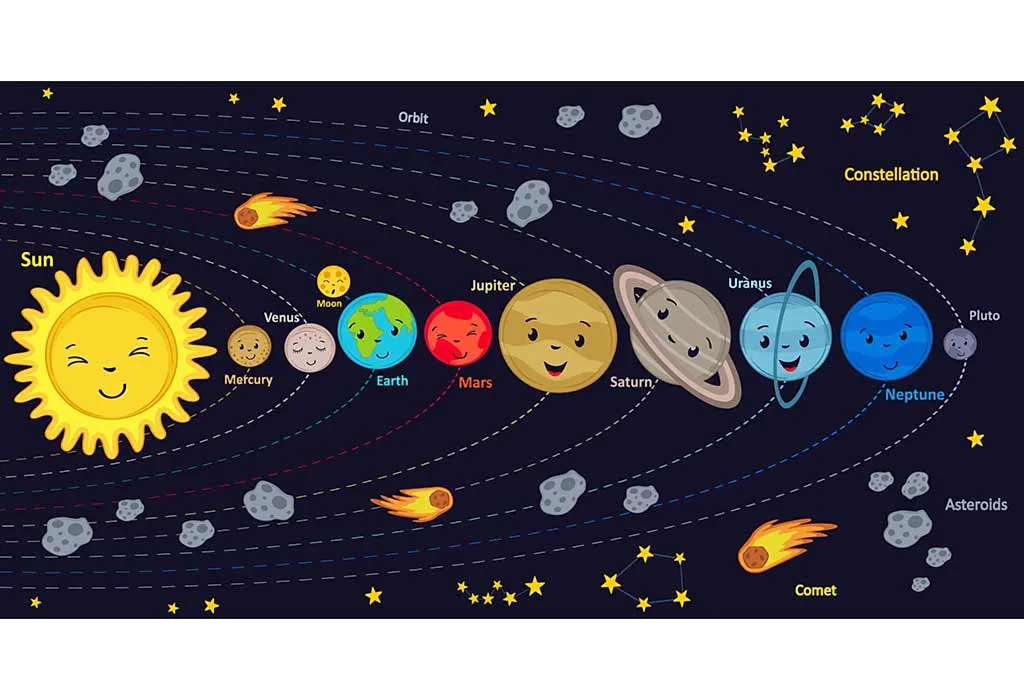
Key Points to Remember When Writing an Essay on the Solar System
10 lines on solar system, a paragraph on solar system, short essay on solar system, long essay of the solar system in english, what will your child learn from the essay on the solar system.
Writing essays can be an incredible journey of exploration, especially when diving into fascinating topics like the solar system. A solar system essay, like the one we’re about to embark on, provides an opportunity to understand the vast universe we are a part of. By attempting this essay in English, students can improve their language skills, enhance their creativity, and develop a deeper appreciation for the wonders beyond our planet. Now, let’s travel through space and time to understand the marvellous entity we call the solar system.
When you embark on the enlightening journey of writing an essay on the solar system, it’s essential to remember some fundamental aspects to make your essay stand out. These points ensure that your content is rich and informative and captivates your readers.
- Research Thoroughly: Before starting, gather information from credible sources. The solar system is vast, and discoveries are made regularly.
- Keep It Organised: Structure your essay with a proper introduction, body, and conclusion. This will help readers follow your thoughts.
- Use Simple Language: If it’s meant for children and students, keep your language simple and avoid jargon.
- Include Visuals: Include images or diagrams of planets, orbits, or other celestial bodies to make your essay more engaging and to help explain complex concepts.
- Discuss Recent Discoveries: Astronomy is a constantly evolving field. To keep your essay current, mention any new findings or missions.
- Maintain Accuracy: When mentioning facts or figures, ensure they are accurate. Mistakes in such essays can misinform readers.
- Personal Touch: Share anecdotes or experiences related to stargazing or space exploration. This adds a warm, personal touch to the essay.
- Include Interesting Facts: Sprinkle your essay with fascinating tidbits about the solar system , like the storms on Jupiter or the possibility of water on Mars .
- Stay Updated: The realm of space exploration and astronomy is constantly advancing. Ensure you are updated with the latest information.
- Proofread: After finishing your essay, review it for any grammatical or factual errors. A well-polished essay makes a better impression.
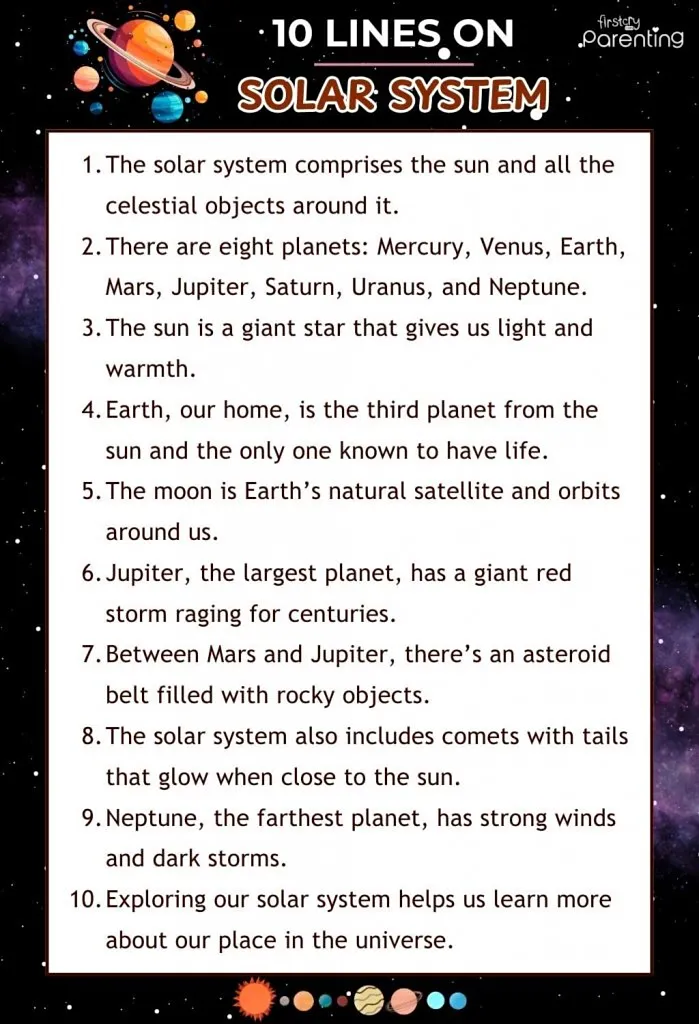
For primary class students just beginning their exploration into the vast wonders of space, breaking down the vastness of the solar system into digestible bites is essential. The solar system can be awe-inspiring with its planets, moons, and other celestial wonders. Here’s a simple solar system 10-line essay perfect for budding astronomers and an essay for primary-class students.
1. The solar system comprises the sun and all the celestial objects around it.
2. There are eight planets: Mercury , Venus, Earth, Mars, Jupiter, Saturn , Uranus, and Neptune.
3. The sun is a giant star that gives us light and warmth.
4. Earth , our home, is the third planet from the sun and the only one known to have life.
5. The moon is Earth’s natural satellite and orbits around us.
6. Jupiter , the largest planet, has a giant red storm raging for centuries.
7. Between Mars and Jupiter, there’s an asteroid belt filled with rocky objects (4) .
8. The solar system also includes comets with tails that glow when close to the sun.
9. Neptune, the farthest planet, has strong winds and dark storms (5) .
10. Exploring our solar system helps us learn more about our place in the universe.
Young students can use these lines as a foundation and further expand their knowledge by exploring each point in depth as they grow.
Writing an essay for classes 1 & 2 can be a great way for young students to understand the solar system. To help them grasp the essentials, here’s a short essay in 100 words tailored to their comprehension level.
The solar system is like a big family in space. At the centre is the sun , shining bright and giving us light. Around the sun, eight planets move in circles called orbits. Earth is one of them, and it’s where we live. Some planets have rings, like Saturn, and some have many moons. There are also tiny rocks called asteroids and icy bodies known as comets. Every member of this space family has its own unique story. By reading and learning about the solar system, kids can begin to understand the vast world beyond our blue sky.
The allure of the night sky, dotted with twinkling stars and distant planets, has always been a source of wonder for humans. Exploring the solar system’s mysteries offers profound insights into the cosmos and our place within it. The following essay, in 200 words, captures the essence of this mesmerising expanse.
Our solar system is a cosmic marvel, a vast expanse dominated by the sun’s brilliant glow. The centre of the solar system is occupied by the sun, a colossal sphere of fiery gas that makes up over 99% of the solar system’s total mass (3) . Orbits around this central star are eight diverse planets with unique features and mysteries. The rocky planets Mercury, Venus , Earth, and Mars are nearest to the sun. These are followed by the gas giants, Jupiter and Saturn, and the ice giants, Uranus and Neptune.
In contrast, each planet provides a distinct study, from Mercury and Venus’s scorching surfaces to Neptune’s frozen realms. Beyond the planets, the solar system also shelters asteroids, comets, and dwarf planets like Pluto. As we send probes and satellites farther into space, our understanding of this vast system deepens, revealing secrets that challenge our understanding of existence. The solar system, with its intricate dance of celestial bodies, is a testament to the grandeur of the universe, beckoning us to explore and discover.
For every student and reader, understanding our solar system is the first step towards unravelling the deeper mysteries of the cosmos.
The cosmos has always fascinated mankind. Its vastness and mysteries have piqued our curiosity for centuries. To comprehend the universe’s grandeur, we must begin with our neighbourhood in space: the solar system. This solar system essay for class 3 and above offers more profound insights into our cosmic home.
What Is the Solar System?
The solar system comprises various celestial bodies held together by the sun’s gravitational pull, which sits at its centre. This dynamic system is located in the Milky Way galaxy and spans a distance of billions of miles. The major constituents of the solar system are the sun, eight planets, their moons, and a range of smaller objects like asteroids, comets, and dwarf planets. It is an intricate dance of objects revolving around the sun, each following its unique path and exhibiting individual characteristics.
How Does the Solar System Work?
The sun is the heart of the solar system, a colossal ball of gas undergoing nuclear fusion. It emits immense heat and light, making life possible on Earth. The sun’s gravitational force is so strong that it keeps all the planets and celestial bodies in their orbits.
The planets orbit the sun in elliptical paths. Like Mercury and Venus, those closest to the sun complete their orbits quicker than those farther away, such as Neptune . The force of gravity also ensures that moons orbit planets. For example, our Earth has one moon, while Jupiter boasts 79 known moons!
The balance of gravity and the momentum of celestial objects keep everything in place. Without the sun’s gravitational pull, planets would drift away into the vastness of space.
Celestial Bodies Exist in the Solar System
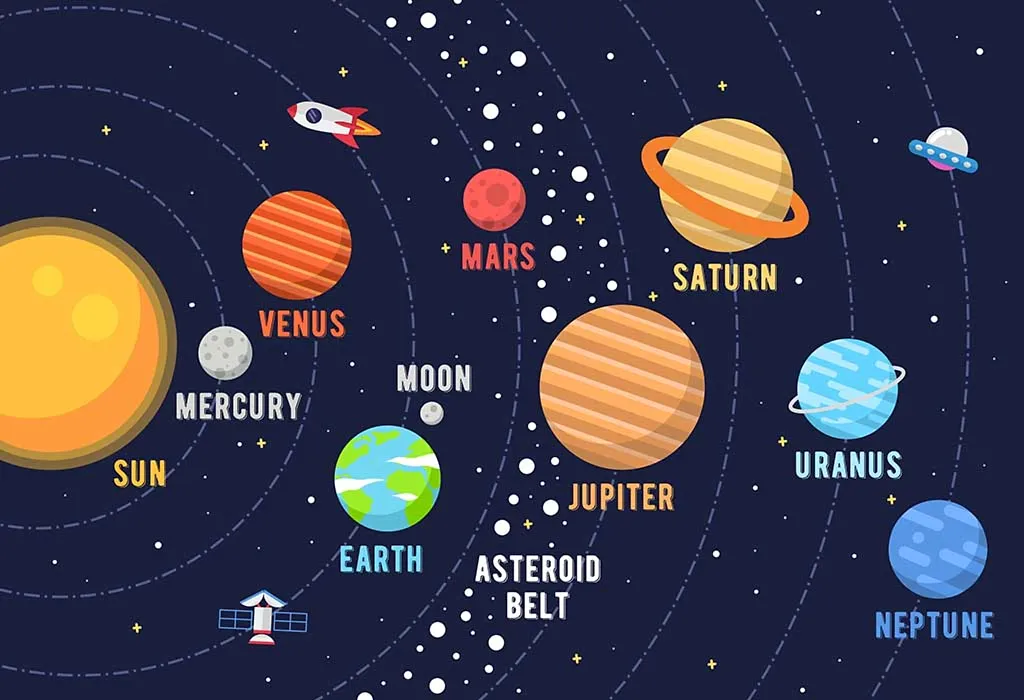
Our solar system’s central star provides energy and light that drive life on Earth.
There are eight in total. The inner planets (Mercury, Venus, Earth, and Mars) are rocky, while the outer planets (Jupiter, Saturn, Uranus, and Neptune) are gas giants or ice giants.
Natural satellites that orbit planets. Their number varies from planet to planet.
4. Asteroids
Rocky fragments remain from the formation of the solar system. Most are found in the asteroid belt between Mars and Jupiter.
Comets are icy bodies that come from the solar system’s outer regions. When they approach the sun, they develop glowing tails.
6. Dwarf Planets
These celestial bodies orbit the sun and have enough mass for their self-gravity to overcome rigid body forces (2) . However, they still need to clear their neighbouring region of other objects. Pluto is the most famous dwarf planet.
7. Kuiper Belt & Oort Cloud
These are regions beyond Neptune filled with millions of icy objects. The Kuiper Belt is closer than the Oort Cloud and is the birthplace of short-term comets (1) .
Our solar system is breathtakingly vast and dynamic, filled with various celestial bodies. Its complex mechanisms and operations provide invaluable insights into the universe’s workings. Understanding the solar system is not just a part of the curriculum for students in class 3 and above; it is a journey into the wondrous realm of space. This essay aims to be a guide, igniting young minds’ curiosity and exploration.
Through the essay on the solar system, your child will gain a foundational understanding of our cosmic neighbourhood, grasping the vastness and intricacies of space. Beyond mere facts, the essay fosters curiosity, inspiring them to dig deeper into the mysteries of the universe and comprehend the grandeur and significance of the celestial dance above us.
1. Where is the solar system situated?
The solar system is in the Milky Way galaxy, in one of its spiral arms called the Orion Arm.
2. How many total solar systems exist?
Numerous solar systems exist, with billions believed to reside in our Milky Way galaxy alone. This showcases the vast expanse and diversity of solar systems.
The solar system’s myriad celestial bodies and dynamic interplays provide a window into the cosmos’s infinite wonders. Understanding and appreciating its grandeur satiates our innate curiosity and helps us find our humble place within the vast tapestry of the universe.
References/Resources:
1. Relationship of the Kuiper Belt to the Oort Cloud; The European Space Agency; https://esahubble.org/images/opo0204i/
2. What is a Dwarf Planet?; Jet Propulsion Laboratory; https://www.jpl.nasa.gov/infographics/what-is-a-dwarf-planet ; April 2015
3. Our Sun: Facts; NASA; https://science.nasa.gov/sun/facts/
4. Asteroids: Facts; NASA; https://science.nasa.gov/solar-system/asteroids/facts/
5. Neptune Facts; NASA; https://science.nasa.gov/neptune/facts/
Also Read:
Facts About Space for Children
- RELATED ARTICLES
- MORE FROM AUTHOR

STEM vs STEAM vs STREAM: Things You Need to Know
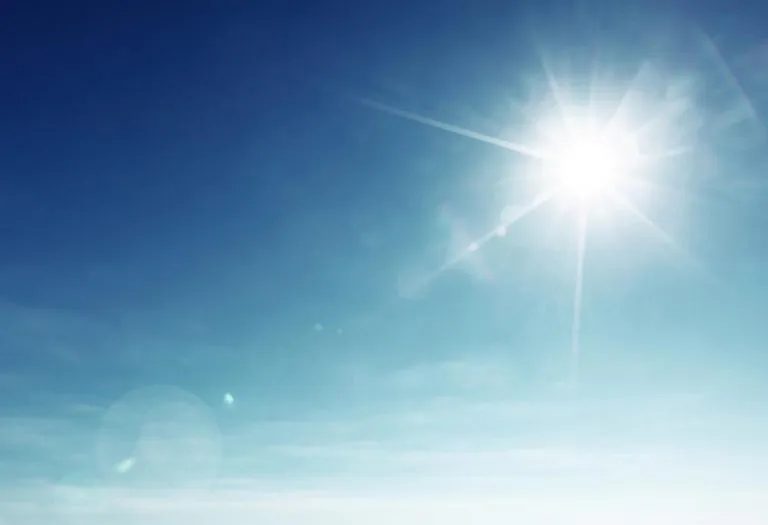
20 Interesting Sun Facts for Kids

Fun Chameleon Facts for Kids

List of Animals that Start with N

Interesting Facts About Albert Einstein for Kids

Essay On Old Age Home – 10 Lines, Paragraph & Long Essay
Popular on parenting.

245 Rare Boy & Girl Names with Meanings

22 Short Moral Stories in English For Kids

170 Boy & Girl Names That Mean 'Gift from God'

800+ Cool & Cute Nicknames for Boys & Girls
Latest posts.
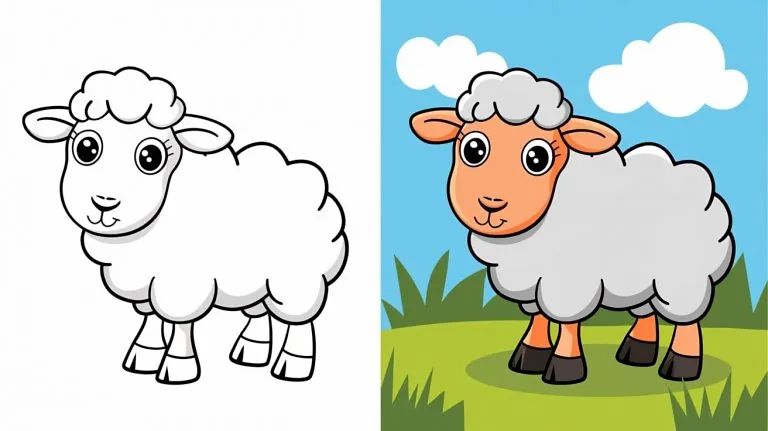
Sheep Coloring Pages - Free Printable Pages For Kids

20 Best Potty Training Reward Ideas That Will Work

30 Best Gifts for Wife: Perfect Presents for Any Occasion

120 Heartwarming Quotes for Son From Parents

The solar system, explained
Our solar system is made up of the sun and all the amazing objects that travel around it.
The universe is filled with billions of star systems. Located inside galaxies, these cosmic arrangements are made up of at least one star and all the objects that travel around it, including planets, dwarf planets, moons, asteroids, comets, and meteoroids. The star system we’re most familiar with, of course, is our own.
Home sweet home
If you were to look at a giant picture of space, zoom in on the Milky Way galaxy , and then zoom in again on one of its outer spiral arms, you’d find the solar system. Astronomers believe it formed about 4.5 billion years ago, when a massive interstellar cloud of gas and dust collapsed on itself, giving rise to the star that anchors our solar system—that big ball of warmth known as the sun.
Along with the sun, our cosmic neighborhood includes the eight major planets. The closest to the sun is Mercury , followed by Venus , Earth, and Mars . These are known as terrestrial planets, because they’re solid and rocky. Beyond the orbit of Mars, you’ll find the main asteroid belt , a region of space rocks left over from the formation of the planets. Next come the much bigger gas giants Jupiter and Saturn , which is known for its large ring systems made of ice, rock, or both. Farther out are the ice giants Uranus and Neptune . Beyond that, a host of smaller icy worlds congregate in an enormous stretch of space called the Kuiper Belt. Perhaps the most famous resident there is Pluto . Once considered the ninth planet, Pluto is now officially classified as a dwarf planet , along with three other Kuiper Belt objects and Ceres in the asteroid belt.
Moons and other matter
More than 150 moons orbit worlds in our solar system. Known as natural satellites, they orbit planets, dwarf planets, asteroids, and other debris. Among the planets, moons are more common in the outer reaches of the solar system. Mercury and Venus are moon-free, Mars has two small moons, and Earth has just one. Meanwhile, Jupiter and Saturn have dozens, and Uranus and Neptune each have more than 10. Even though it’s relatively small, Pluto has five moons, one of which is so close to Pluto in size that some astronomers argue Pluto and this moon, Charon, are a binary system.

Too small to be called planets, asteroids are rocky chunks that also orbit our sun along with the space rocks known as meteoroids. Tens of thousands of asteroids are gathered in the belt that lies between the orbits of Mars and Jupiter. Comets, on the other hand, live inside the Kuiper Belt and even farther out in our solar system in a distant region called the Oort cloud .
Atmospheric conditions
The solar system is enveloped by a huge bubble called the heliosphere . Made of charged particles generated by the sun, the heliosphere shields planets and other objects from high-speed interstellar particles known as cosmic rays. Within the heliosphere, some of the planets are wrapped in their own bubbles—called magnetospheres —that protect them from the most harmful forms of solar radiation. Earth has a very strong magnetosphere, while Mars and Venus have none at all.
Most of the major planets also have atmospheres . Earth’s is composed mainly of nitrogen and oxygen—key for sustaining life. The atmospheres on terrestrial Venus and Mars are mostly carbon dioxide, while the thick atmospheres of Jupiter, Saturn, Uranus, and Neptune are made primarily of hydrogen and helium. Mercury doesn’t have an atmosphere at all. Instead scientists refer to its extremely thin covering of oxygen, hydrogen, sodium, helium, and potassium as an exosphere.
Moons can have atmospheres, too, but Saturn’s largest moon, Titan, is the only one known to have a thick atmosphere, which is made mostly of nitrogen.
Life beyond?
For centuries astronomers believed that Earth was the center of the universe, with the sun and all the other stars revolving around it. But in the 16th century, German mathematician and astronomer Nicolaus Copernicus upended that theory by providing strong evidence that Earth and the other planets travel around the sun.
Today, astronomers are studying other stars in our galaxy that host planets, including some star systems like our own that have multiple planetary companions. Based on the thousands of known worlds spotted so far, scientists estimate that billions of planetary systems must exist in the Milky Way galaxy alone.
So does Earth have a twin somewhere in the universe? With ever-advancing telescopes, robots, and other tools, astronomers of the future are sure to find out.
Related Topics
- SOLAR SYSTEM
- SPACE EXPLORATION
- PLANETARY MOONS
You May Also Like

9 spectacular night sky events to see in 2024

A total solar eclipse is coming. Here's how to photograph it.

The ‘small wonders’ unlocking secrets of the solar system

Europa is an icy ocean world—and NASA is finally going to explore it

Did Pluto ever actually stop being a planet? Experts debate.
- Terms of Use
- Privacy Policy
- Your US State Privacy Rights
- Children's Online Privacy Policy
- Interest-Based Ads
- About Nielsen Measurement
- Do Not Sell or Share My Personal Information
- Nat Geo Home
- Attend a Live Event
- Book a Trip
- Inspire Your Kids
- Shop Nat Geo
- Visit the D.C. Museum
- Learn About Our Impact
- Support Our Mission
- Advertise With Us
- Customer Service
- Renew Subscription
- Manage Your Subscription
- Work at Nat Geo
- Sign Up for Our Newsletters
- Contribute to Protect the Planet
Copyright © 1996-2015 National Geographic Society Copyright © 2015-2024 National Geographic Partners, LLC. All rights reserved
- Essay On Solar System
Essay on Solar System
500+ words essay on solar system.
The Sun and all other planets and celestial bodies that revolve around it are together called a solar system. Our solar system consists of eight planets and an asteroid belt. These planets are termed inner and outer planets. Earth, Venus, Mercury and Mars are considered inner planets closer to the Sun and smaller, also known as terrestrial planets. The remaining four planets, Jupiter, Saturn, Uranus, and Neptune, are outer planets that are massive and termed giant planets.
This essay will discuss our solar system and give a detailed summary of the eight planets.
Planets are large celestial bodies that revolve around the Sun in fixed orbits. They don’t have their own lights and use the Sun’s light to reflect light. As stars, planets don’t twinkle because they are closer to us. The planets Mercury, Venus, Earth and Mars, remain in the inner solar system, and the outer solar system planets are Jupiter, Saturn, Uranus, and Neptune. Among all the planets, Earth is the only planet where life exists.
Satellites are objects that revolve around the Sun. Satellites can be categorised into two types – natural and man-made. For example, the Moon is a natural satellite that revolves around the Earth.
Man-made Satellite
Man-made satellites are artificial satellites sent to space to gather information about other planets. The first artificial satellite sent by India into space is Aryabhatta.
Asteroids are small, rocky objects that revolve around the Sun. Most asteroids are made of different rocks, but some have clays or metals, such as nickel and iron. Asteroids have irregular shapes and are not round-like planets.
Comets are irregularly shaped bodies composed of non-volatile grains and frozen gases. For example, Haley’s comet is a comet that occurs once every 76 years.
Dwarf planets
Dwarf planets are heavenly bodies that are too small to be considered a planet but too large to fall under smaller categories. Example: Pluto
Our Solar System
The nearest and the smallest planet in our solar system is Mercury. The planet is hidden under the Sunlight, which can only be seen before sunrise or sunset.
Venus is the closest and brightest planet in our solar system other than the Sun and the Moon. It is known as the morning and evening star because it appears in the eastern sky before Sunrise and in the western sky after sunset.
In our solar system, the Earth is the only planet that favours life. On this planet, life is possible because of conditions like water and atmosphere and the favourable distance from the Sun. The Earth’s rotation of axis is tilted, due to which we witness seasonal changes, and the Moon is the only natural satellite of planet Earth. From outer space, the colour of the Earth appears bluish-green as light from the landmass and water bodies gets reflected.
Mars is the fourth planet from the Sun. It is often called the “Red Planet” because the reddish iron oxide prevalent on its surface gives it a reddish appearance. Mars has two natural satellites.
Jupiter is the largest planet in our solar system. So big that it can accommodate 1300 piles of Earth. However, it is only 318 times heavier than Earth. Jupiter has at least 67 Moons. Jupiter has a big red spot, a gigantic one twice as wide as the Earth, that has been swirling for many years.
Saturn is the second-largest planet in our solar system. It is unique as it has thousands of beautiful rings. Saturn has numerous Moons.
Uranus and Neptune
Uranus rotates from west to east. Its axis has a huge tilt, making it look like it’s spinning on its side. Neptune is the eighth and farthest planet in our solar system. It has powerful winds, which are more potent than any other planet in the solar system.
Scientists and astronomers have been studying our solar system for centuries, and the findings are pretty interesting. Various planets that form a part of our solar system have their unique geological features, and all are different from each other in several ways. But, unfortunately, after years of exploration, the Universe has still more mysteries that are left unknown.
From our BYJU’S website, students can also access CBSE Essays related to different topics. It will help students to get good marks in their exams.
Frequently Asked Questions on Solar system Essay
Are there any other systems present in the universe.
Research has shown that there are several other systems existing in the universe other than our Solar system.
Does the solar system only consist of planets?
No, the solar system also consists of dwarf planets, asteroids, comets, etc.
Has the Solar system fully been discovered?
Although there are several types of research going on, there are still many undiscovered and unreachable regions of the Solar system.
Leave a Comment Cancel reply
Your Mobile number and Email id will not be published. Required fields are marked *
Request OTP on Voice Call
Post My Comment
Register with BYJU'S & Download Free PDFs
Register with byju's & watch live videos.
Home — Essay Samples — Environment — Solar Energy — The Solar System: An Intricate Cosmic Structure
The Solar System: an Intricate Cosmic Structure
- Categories: Solar Energy Space Exploration
About this sample

Words: 663 |
Published: Jun 6, 2024
Words: 663 | Page: 1 | 4 min read
Table of contents
Introduction, body paragraph, components of the solar system, dynamics and interactions, significance of research.

Cite this Essay
To export a reference to this article please select a referencing style below:
Let us write you an essay from scratch
- 450+ experts on 30 subjects ready to help
- Custom essay delivered in as few as 3 hours
Get high-quality help

Prof Ernest (PhD)
Verified writer
- Expert in: Environment Science

+ 120 experts online
By clicking “Check Writers’ Offers”, you agree to our terms of service and privacy policy . We’ll occasionally send you promo and account related email
No need to pay just yet!
Related Essays
1 pages / 615 words
2 pages / 775 words
1 pages / 469 words
2 pages / 800 words
Remember! This is just a sample.
You can get your custom paper by one of our expert writers.
121 writers online
Still can’t find what you need?
Browse our vast selection of original essay samples, each expertly formatted and styled
Related Essays on Solar Energy
Solar energy is a renewable and sustainable energy source that has gained significant attention in recent years due to its potential to address environmental concerns and provide economic benefits. This essay will explore the [...]
The solar energy industry has seen lots of advancements and new tech in recent years. These innovations aim to make solar power more efficient and effective. One exciting new technology is perovskite solar cells. They’re getting [...]
Solar energy continues to be a pivotal player in the global energy landscape, offering sustainable solutions to mitigate climate change and meet growing energy demands. This essay delves into the latest developments, trends, and [...]
The Sun, a seemingly ordinary star among the billions that populate our galaxy, holds a position of extraordinary importance in our solar system. It is the source of light and heat that sustains life on Earth and drives the [...]
What is PV solar power? You have heard the term, but you are unsure as to its meaning. You are vaguely aware that solar power has something to do with making energy from sunlight. But what is PV solar power? Is it different from [...]
Solar DIYers wonder what this is? Wonder not, as you will get to know what this is and understand the necessary tools to design, install, and operate, in this article. Read through. This is a concept of designing and putting [...]
Related Topics
By clicking “Send”, you agree to our Terms of service and Privacy statement . We will occasionally send you account related emails.
Where do you want us to send this sample?
By clicking “Continue”, you agree to our terms of service and privacy policy.
Be careful. This essay is not unique
This essay was donated by a student and is likely to have been used and submitted before
Download this Sample
Free samples may contain mistakes and not unique parts
Sorry, we could not paraphrase this essay. Our professional writers can rewrite it and get you a unique paper.
Please check your inbox.
We can write you a custom essay that will follow your exact instructions and meet the deadlines. Let's fix your grades together!
Get Your Personalized Essay in 3 Hours or Less!
We use cookies to personalyze your web-site experience. By continuing we’ll assume you board with our cookie policy .
- Instructions Followed To The Letter
- Deadlines Met At Every Stage
- Unique And Plagiarism Free
The Origins of the Solar System Essay
Introduction, the nebular hypothesis, origin of the molecular cloud, runaway star hypothesis, formation of the sun and planets, creation of the earth, formation of the oceans: comet/proto-planet impact theory, reference list.
The origin of the Sun and its orbiting planets has been a point of hypothesis and conjecture ever since man looked upon the stars and planets and wondered about their origins. For the ancient Greek and Roman civilization the celestial bodies they observed in the sky were thought of as Gods and Goddesses, looking down up the Earth from some form of godlike platform. Today, it is an established fact that the heavenly bodies we see in the night sky are composed of planets and stars, celestial bodies of rock, gas and varying forms of elements that were formed billions of years ago. Even though such objects have been observed for hundreds of years it is only within the last 200 that humanity has begun to understand their unique qualities. While there have been conjectures, varying hypothesis and age old established theories what must be understood is that as the science of astronomy evolves humanity begins to slowly adapt to new information, new discoveries and subsequent re-evaluations of what we knew of as fact. For example, early studies of astronomy adopted the geocentric model in that they believed that the sun, planets, moon and stars revolved around the Earth, not only that there was also the belief that the Earth was in fact flat (Copernicus, 2009: 83). It is based on this that when examining the established theories on the origins of the solar system one must do so with both an open yet skeptical mind, taking into account the given data and observations yet not clearly adhering to any one theory as being definitive proof.
Another interesting topic that should be taken note of is the origin of the Earth itself for just as there have been numerous theories as to the origin of the solar system there have been a plethora of theories which have attempted to determine the origin of the Earth itself. Our home planet is unique in that it is the only planet within our solar system that has sufficiently developed to be able to support life. While there have been varying accounts of how life came to be on Earth, with religion and science vying for attention, the fact remains that the uniqueness of our planet should not be underestimated and as such bodes a certain degree of curiosity as to the origins of the unique circumstances that enabled Earth to become what it is today. It is based on the various questions presented that this paper will explore the origins of the solar system and of Earth itself in order to attain a clear picture of where it came from and what its possible end could be.
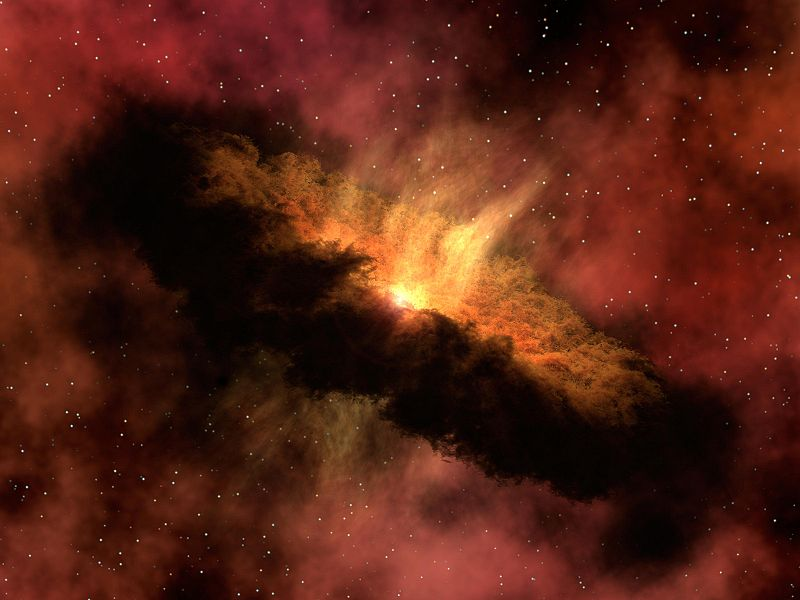
Currently, one of the most widely accepted theories regarding the formation of the solar system is that of the nebular hypothesis which states that the solar system originated from a molecular cloud wherein through the introduction of an external force caused a gravitational collapse of the fragment resulting in the creation of A pre-solar nebula that would eventually become our solar system (Glassmeier, 2006: 1 – 5). While there has been no definitive evidence as to the exact origin of the external force that caused a section of the molecular cloud to collapse rather than dispersing it into space it is theorized that the energy from a nearby supernova produced sufficient enough force to cause the collapse and help trigger the necessary events needed to create the solar system. While few studies dispute the nebular hypothesis several do call into question the theory that a supernova caused the initial collapse. Studies such as those by Woolfson (2010) state that the energies from a supernova instead of causing a section of the molecular cloud to collapse would have actually dispersed a majority of the cloud into space thus preventing the formation of the solar system (Woolfson, 2000: 1 – 15). Furthermore, while the nebular hypothesis has been well established as a guiding concept in understanding the creation of celestial bodies little is known as to the precise origins of the molecular cloud that gave birth to the solar system itself. Several scientists such as Lognonne et al. (2007) state that origin of the Sun and its surrounding planets was a molecular cloud and go to great lengths explaining how it led to the creation of the solar system yet a lot of studies neglect to mention how the molecular cloud came to be in the first place (Lognonne et al., 2007: 1 -3)
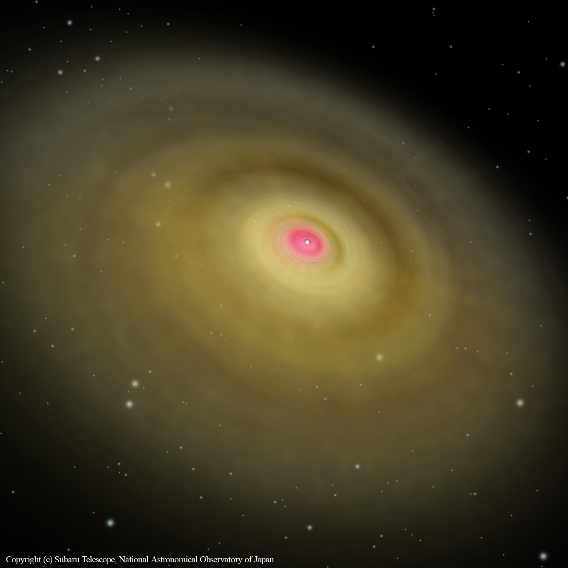
While this paper has so far expounded on the nebular theory involving the Solar system’s origins as coming from a giant molecular cloud a rather interesting question comes to mind, “if the origin of the solar system is that of a giant molecular cloud where did the molecular cloud come from?”. Studies such as those by Sorrell (2008) explain that while our own sun is 4.5 billion years old the age of the universe itself has been estimated at roughly 13.75 billion years (estimate subject to change due to varying accounts as to the proper calculation) (Sorrell, 2008: 45 – 49). Furthermore it must be noted that our sun is not the oldest sun in the universe let alone in our galaxy and in fact can be considered in the prime of its “youth” as a main sequence star (Naylor, 2009: 432). It has been theorized by researchers such as Freire (2008) that a few billion years after the Big Bang, Super Massive stars, many times the temperature of our current sun and several times its size, were among the first stars to form within the universe (Freire, 2008: 459-460). These celestial bodies were able to grow to such great size due to less “competition” for available materials in order to coalesce into stars; it must be noted though that at this point in time planets were unable to form due to the lack of heavier elements in which a sufficient enough solid mass could coalesce into a planet (Dessart, 2010: 2113-2125).
Rather interestingly, it was actually due to the inherent instability of Super Massive stars that the universe became what it is today; this is due to the theory that as a direct result of their internal instability most of the original Super Massive stars became supernovas which actually caused the original molecular clouds in the universe to form (Dessart et al., 2010: 2120 – 2125). The original state of the universe was actually more “pure” in the sense that there was a distinct lack of heavier elements, as such the question of “where did the heavier elements come from?” comes to mind. This is actually resolved by looking at the activity of our own sun wherein through a process called stellar nucleosynthesis in which the nuclear reactions within the sun itself is able to help build the nuclei of elements that are heavier than hydrogen (Chiosi, 2010).
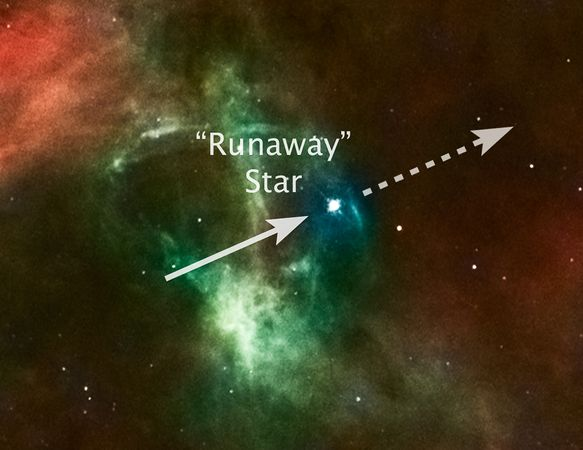
In relation to the explanation of the origins of the molecular cloud as coming from the debris from Super Massive stars Courtland (2010) presents a new theory that details exactly how the molecular cloud that spawned the solar system came to be. In her study which involved the examination of various meteorites she discovered that sealed within the rock were calcium-aluminum rich incisions (Al-26) that could only have been formed by stars that were at least 10 times as massive as the sun (Courtland, 2010: 8). Due to the fact that Super Massive stars usually form within clusters with Al 26 usually decaying rapidly due to the intense heat within such clusters it is hypothesized by Courtland (2010) that a run away must have been tossed out of its orbit as a direct result of either an explosion of a nearby Super Massive star or due to combined gravitational push by its sibling stars within the cluster (Courtland, 2010: 8). Due to Super Massive stars having a relatively short life cycle when the star became a supernova the dispersed molecules and elements became the molecular cloud that we know of today as being the primary basis of the nebular hypothesis.
Creation of the Sun

Since this paper has now established the various theories which attempt to explain the origins of the molecular cloud that brought about the creation of the solar it is now necessary to explain the current prevailing theory on how the planets and the creation of the sun came about. As mentioned earlier, in the section detailing the nebular theory, it was explained that as a direct result of a gravitational collapse of a section of the molecular cloud this precipitated the creation of the solar system (Boeyens, 2009: 493-499). A better explanation of this would be that as section of the nebula collapsed this produced a certain degree of angular momentum wherein the nebula actually began to spin faster as it collapsed in on itself. This spinning combined within the collapse produced a great deal of kinetic energy within the core of the molecular cloud until the result was a contraction of the center of the molecular cloud, which had now become a disc shaped object, into what is known as a proto-star, namely a star that has yet to have hydrogen fusion occur at its core (Boeyens, 2009: 493-499). Within 50 million years the internal temperature and pressure of the core itself was able to build to sufficient levels resulting in the start of hydrogen fusion marking the entry of the sun into its life as a main sequence star (Boeyens, 2009: 493-499)
Theory of Accretion

The theory of accretion is currently the most widely accepted theory proposing the creation of the planets, in it the theory indicates that the leftover material from the sun’s creation continued to spin around the sun slowly clumping together piece by piece until larger dust shaped particles were created (Ogihara et al., 2007: 522-530). Gradually these dust particles also began clumping together resulting in the creation of larger and larger objects until finally the entire solar system was composed of literally dozens of moon sized objects that crashed into each over a period of several million years (Ogihara et al., 2007: 522-530). It must be noted that the reason why such a process didn’t just create a system of bits and pieces of rock is due to the fact that these moon sized objects actually had viscous outer cores in the sense that their composition was similar to lava due to the high temperatures of the sun at the time and the process of accretion itself. As such when the objects collided what resulted was not a titanic clash that mutually shattered the objects but rather a process where both objects combined to form a larger structure or surfaces were “swapped” in the sense that certain parts of either proto-planet’s surface accreted to the colliding object (Ogihara et al., 2007: 522-530).
Originally the Earth was a proto-planet no bigger than the moon yet over several million years the process of accretion was able to slowly build up the Earth to its present shape. It must be noted though that the early outer core of the planet was fluid in that due to the intense heat present at the time metals that had accumulated on the planet’s surface slowly submerged into the inner core creating the metallic core that is present today (Robin, 2008: 4061 -4075). Within 150 million years of the planet reaching its current mass the surface sufficiently cooled resulting in the creation of a primitive crust, yet unlike today the surface of the Earth is estimated by studies as being roughly 1600 degrees Celsius with numerous volcanoes dotting the landscape releasing gases into the atmosphere which formed the initial atmosphere of the planet which was kept in place by Earth’s inherent gravity (Robin, 2008: 4061 -4075).
Most scientists agree that the presence of water on the Earth was the pivotal necessity necessary in order for life to start on the planet. When examining the process of Earth’s creation though there seems to be few indicators of water actually forming directly from the process of creation or within the Earth itself (Robin, 2008: 4061 -4075). One theory that attempts to explain this is the comet/proto-planet impact theory which states that proto-planets, planetoids and comets that were composed of ice were actually prevalent in the inner system during the later stages of the process of accretion. (Robin, 2008: 4061 -4075) As such as the Earth continued to orbit around the sun it supposedly impact millions of comets along with several icy proto-planets to create the water that can be seen in the oceans today. In fact, 4.4 billion years after the creation of the sun the Earth had actually sufficiently cooled enough to actually create clouds, rain, and the even oceans on the planets surface (Robin, 2008: 4061 -4075). This particular period marks the creation of the atmosphere that is present in the world today which is a combination of oxygen, carbon dioxide and other gases.
By the end of this paper it has become apparent that the process of creation of our solar system and even of our planet has been an accumulation of fortunate incidents that culminated in humanity evolving into its present state. When examining the theories explaining the creation of the molecular cloud, how Courtland (2010) presented the notion that the molecular cloud our present system came from originated from a rogue Super Massive star that coincidentally was shot out of its group by gravitational forces, that it was able to travel far enough to an area ideal enough for uninterrupted growth, that the creation of our planet was in the right place, at the right time with readily available water literally crashing into the planet in order to support life; a combination of all of these completely coincidental factors almost leads one to believe that the creation of humanity itself was no accident but on purpose. On the other hand there are quite literally billions upon billions of solar systems within the universe and it might actually be the case that the process that created the Earth is not so coincidental and that somewhere out there life similarly exists on thousands of planetary systems with the exact same composition as that of humanity yet far away enough that we cannot see the similarities at the present.
Boeyens, JA 2009, ‘Commensurability in the solar system’, Physics Essays , 22, 4, pp. 493-499, Academic Search Premier.
‘Copernicus’ 2009, American Heritage Student Science Dictionary , p. 83, Science Reference Center.
Courtland, R 2010, ‘Runaway star may have spawned the solar system’, New Scientist , 205, 2754, p. 8, Academic Search Premier.
Chiosi, C 2010, ‘Primordial and Stellar Nucleosynthesis Chemical Evolution of Galaxies’, AIP Conference Proceedings , 1213, 1, pp. 42-63, Academic Search Premier.
Dessart, L, Livne, E, & Waldman, R 2010, ‘Shock-heating of stellar envelopes: a possible common mechanism at the origin of explosions and eruptions in massive stars’, Monthly Notices of the Royal Astronomical Society , 405, 4, pp. 2113-2131, Academic Search Premier.
Fazekas, A, (2010), Hubble telescope catches superfast runaway star . Web.
Freire, PC 2008, ‘Super-Massive Neutron Stars’, AIP Conference Proceedings , 983, 1, pp. 459-463, Academic Search Premier.
Glassmeier, K, Boehnhardt, H, Koschny, D, Kührt, E, & Richter, I 2006, ‘The Rosetta Mission: Flying Towards the Origin of the Solar System’, Space Science Reviews , 128, 1-4, pp. 1-21, Academic Search Premier.
Lognonne, P, Des Marais, D, Raulin, F, & Fishbaugh, K 2007, ‘Epilogue: The Origins of Life in the Solar System and Future Exploration’, Space Science Reviews , 129, 1-3, pp. 301-304, Academic Search Premier.
McFadden, L, Weissman, P, & Johnson, T 2007, Encyclopedia of the Solar System , Elsevier LTD., eBook Collection. Web.
National Astronomical Observatory of Japan. (N.I.). Hd 141569a’s disk . Web.
Naylor, T 2009, ‘Are pre-main-sequence stars older than we thought?’, Monthly Notices of the Royal Astronomical Society , 399, 1, pp. 432-442, Academic Search Premier.
N.I.. (2010). The Creation of the Earth. Web.
Ogihara, M, Ida, S, & Morbidelli, A 2007, ‘Accretion of terrestrial planets from oligarchs in a turbulent disk’, ICARUS , 188, 2, pp. 522-534, Academic Search Premier.
Photo Journal. (2007). Pia09967: water’s early journey in a solar system (artist concept) . Web.
Robin M., C 2008, ‘Accretion of the Earth’, Philosophical Transactions of the Royal Society A: Mathematical, Physical & Engineering Sciences , 366, 1883, pp. 4061-4075, Academic Search Premier.
Sorrell, WH 2008, ‘The cosmic age crisis and the Hubble constant in a non-expanding universe’, Astrophysics & Space Science , 317, 1/2, pp. 45-58, Academic Search Premier.
Woolfson, M 2000, ‘The origin and evolution of the solar system’, Astronomy & Geophysics , 41, 1, pp. 1.12-1.19, Academic Search Premier.
- Current Age of the Universe According to the Big Bang Theory
- Solar Energy: Review and Analysis
- “Mars the Abode of Life” by Percival Lowell
- Proto-Nationalism in Premodern Korea and Since 1780
- Proto-Nationalism in Korea and Other Nations Since 1780
- Copernican Model of the Solar System
- Infinite and Non-Expanding Universe
- Astronomy and Astrology Comparison
- “In the Beginning” by Cardinal Joseph
- The Scientific Revolution as the Greatest Achievements by the Humanity
- Chicago (A-D)
- Chicago (N-B)
IvyPanda. (2022, March 28). The Origins of the Solar System. https://ivypanda.com/essays/the-origins-of-the-solar-system/
"The Origins of the Solar System." IvyPanda , 28 Mar. 2022, ivypanda.com/essays/the-origins-of-the-solar-system/.
IvyPanda . (2022) 'The Origins of the Solar System'. 28 March.
IvyPanda . 2022. "The Origins of the Solar System." March 28, 2022. https://ivypanda.com/essays/the-origins-of-the-solar-system/.
1. IvyPanda . "The Origins of the Solar System." March 28, 2022. https://ivypanda.com/essays/the-origins-of-the-solar-system/.
Bibliography
IvyPanda . "The Origins of the Solar System." March 28, 2022. https://ivypanda.com/essays/the-origins-of-the-solar-system/.
- To find inspiration for your paper and overcome writer’s block
- As a source of information (ensure proper referencing)
- As a template for you assignment
IvyPanda uses cookies and similar technologies to enhance your experience, enabling functionalities such as:
- Basic site functions
- Ensuring secure, safe transactions
- Secure account login
- Remembering account, browser, and regional preferences
- Remembering privacy and security settings
- Analyzing site traffic and usage
- Personalized search, content, and recommendations
- Displaying relevant, targeted ads on and off IvyPanda
Please refer to IvyPanda's Cookies Policy and Privacy Policy for detailed information.
Certain technologies we use are essential for critical functions such as security and site integrity, account authentication, security and privacy preferences, internal site usage and maintenance data, and ensuring the site operates correctly for browsing and transactions.
Cookies and similar technologies are used to enhance your experience by:
- Remembering general and regional preferences
- Personalizing content, search, recommendations, and offers
Some functions, such as personalized recommendations, account preferences, or localization, may not work correctly without these technologies. For more details, please refer to IvyPanda's Cookies Policy .
To enable personalized advertising (such as interest-based ads), we may share your data with our marketing and advertising partners using cookies and other technologies. These partners may have their own information collected about you. Turning off the personalized advertising setting won't stop you from seeing IvyPanda ads, but it may make the ads you see less relevant or more repetitive.
Personalized advertising may be considered a "sale" or "sharing" of the information under California and other state privacy laws, and you may have the right to opt out. Turning off personalized advertising allows you to exercise your right to opt out. Learn more in IvyPanda's Cookies Policy and Privacy Policy .

Essay on Solar System
The universe is a vast and mysterious place, and at the heart of it lies our solar system—a captivating and wondrous collection of celestial bodies. In this essay, we will explore the incredible beauty and fascinating science of our solar system, revealing why it continues to be a source of wonder and inspiration.
The Sun: Our Radiant Star
At the center of our solar system shines the Sun, a blazing ball of hot gases. It provides us with warmth, light, and the energy needed for life on Earth. Did you know that the Sun is so massive that it makes up 99.86% of the solar system’s total mass? That’s an astounding statistic!
The Planets: Our Cosmic Companions
Our solar system is home to eight planets, each with its unique characteristics. The four inner planets—Mercury, Venus, Earth, and Mars—are rocky and terrestrial. The four outer planets—Jupiter, Saturn, Uranus, and Neptune—are giant gas planets. Jupiter, the largest, is even larger than all the other planets combined!
Earth: Our Precious Home
Earth is the third planet from the Sun and the only one known to support life. Its diverse ecosystems, from lush rainforests to vast oceans, provide habitats for countless species, including us humans. It’s crucial that we take good care of our planet to ensure a healthy future for all.
The Moon: Earth’s Faithful Companion
Earth is not alone in its journey around the Sun; it has a loyal companion—the Moon. The Moon’s gravitational pull creates tides, and its surface is marked by craters, mountains, and plains. Human beings have even set foot on the Moon during the Apollo missions!
Asteroids and Comets: Cosmic Wanderers
Beyond the planets, our solar system is teeming with smaller objects like asteroids and comets. Asteroids are rocky remnants from the early solar system, while comets are icy bodies that release beautiful tails when they approach the Sun. Studying these objects helps us understand the solar system’s history.
Space Exploration: Unraveling Mysteries
Humans have always been curious about the solar system, and our desire to explore it has led to amazing discoveries. Space missions like Voyager, Hubble, and Mars rovers have provided us with breathtaking images and invaluable information about distant planets, stars, and galaxies.
The Solar System’s Mysteries
Despite our advances in space exploration, there is still much we don’t know about the solar system. Mysteries abound, from the potential existence of a ninth planet beyond Neptune to the origin of life on Earth. Scientists continue to conduct research and missions to uncover these secrets.
Conclusion of Essay on Solar System
In conclusion, the solar system is a source of wonder and inspiration for people of all ages. It reminds us of our small place in the vast universe and the beauty and complexity of the cosmos. From the blazing Sun to the distant reaches of space, there is always something new and exciting to discover.
As we gaze up at the night sky, let us remember the remarkable journey of exploration and discovery that has brought us closer to understanding the solar system’s wonders. Let us also recognize the importance of protecting our own planet, Earth, and preserving the beauty of the solar system for future generations. In doing so, we honor the legacy of those who have ventured into the cosmos and continue to inspire future generations of explorers. The solar system, our cosmic neighborhood, beckons us to explore, learn, and marvel at the wonders of the universe.
Also Check: List of 500+ Topics for Writing Essay

Solar System Essay in English For School Students
Unlock the secrets of our solar system with our comprehensive Solar System essay on its formation, structure, and fascinating celestial bodies.
November 1, 2023

Table of Contents
The solar system essay is a remarkable and awe-inspiring essay about encompassing the Sun and its eight major planets, their moons, countless asteroids, and a myriad of comets. At its center is the Sun – a blazing ball of nuclear fusion that sustains life on Earth and all other celestial bodies nearby. Orbiting this source of energy are diverse planets, each with unique characteristics and mysteries waiting to be unraveled. From Mercury’s scorching inferno to Neptune’s icy desolation, our system showcases a wide range of environments.
Our home planet, Earth, stands out as the only known place in the universe where life thrives – making it particularly intriguing to both scientists and philosophers alike. The natural satellites of these planets – such as Earth’s Moon, Ganymede, and Titan – provide valuable insights into their parent bodies’ history and geology. In addition to these planets and their moons, the solar system also hosts numerous asteroids and comets which have played significant roles in shaping Earth’s past through impact events. Studying this vast system not only expands our understanding of the cosmos but also offers the potential for answers about the origin of life and habitable worlds beyond our own. As we continue exploring this wonderous celestial arrangement, it
It is a large celestial body that revolves in a fixed orbit around the Sun. It doesn’t have its lights and uses sunlight to reflect light. Because planets are closer to us, they don’t twinkle as stars. Mercury, Venus, Earth, and Mars remain in the inner solar system, while Jupiter, Saturn, Uranus, and Neptune are in the outer solar system.
Our Solar System
There are eight planets are divided into two groups: inner planets and outer planets. Inner planets, including Mercury, Venus, Earth, and Mars, are more minor and closer to the Sun. The remaining four planets – Jupiter, Saturn, Uranus, and Neptune – are much larger and often called Giant planets.

The most minor planet in our solar system is Mercury, which is also closest to the Sun. Mercury’s geological features include lobed ridges and impact craters. Mercury has a very high surface temperature due to its proximity to the Sun. It can reach temperatures of 450 degrees Celsius during the daytime, but at night, Mercury is cold. Mercury’s diameter is 4,878 kilometres, and it lacks a natural satellite.
As well as being the hottest planet in our solar system, Venus has a toxic atmosphere always traps heat. Venus is also the brightest planet and can be seen from the ground. Venus has the same iron core as Earth and has a thick silicate layer surrounding it. The Venus planet has a diameter of 12,104 km and is similar to Mars. Astronomers have seen evidence of internal geological activity. As with Mars, Venus does not have any natural satellites like Earth.
During the Earth’s lifetime, life is possible because it is covered two-thirds with water. The atmosphere on Earth, which is rich in nitrogen and oxygen, makes it an ideal place for various flora and fauna to survive. Earth has a diameter of 12,760 km and one natural satellite, the moon.
Often referred to as the Red Planet, Mars is the fourth planet from the Sun. This planet is cold and has similar geological features to Earth.This is the only reason why it has captured the interest of astronomers like no other planet. An ice cap has been discovered on this planet.
Jupiter has a strong magnetic field and is primarily made up of helium and hydrogen. It also has a Great Red Spot and cloud bands. This giant storm is believed to have raged here for hundreds of years. There are 79 natural satellites on Jupiter, which is much more than there are on Earth and Mars combined. Jupiter has a diameter of 139,822 km.
As the sixth planet from the Sun, Saturn is also known for its ring system, composed primarily of ice and rock particles. Saturn’s atmosphere is quite like Jupiter’s because it is mostly made up of hydrogen and helium. Saturn has a diameter of 120,500 km and has 62 natural satellites, most of which are made up of ice. Saturn has fewer satellites than Jupiter.
The seventh planet from the Sun, Uranus, is the lightest. Uranus has a blue tint due to methane in its atmosphere. Its core is colder than the other giant planets, and it orbits on its side.
It is the coldest, Neptune is the largest and densest. Neptune has an atmosphere made up of helium, hydrogen, methane, and ammonia and has extremely strong winds. It is the only planet in our solar system that was discovered mathematically. Neptune has a diameter of 49,530 km and has 14 natural satellites, which is more than Earth or Mars combined.
Solar System Essay FAQs
Solar system essays examine the sun, planets, moons, asteroids, and comets of our celestial neighbourhood. They explore their characteristics, orbits, and the vastness of space.
The solar system is a collection of celestial bodies centred around the sun. It includes eight major planets, their moons, asteroids, comets, and other objects. The sun's gravity holds these bodies in orbit, creating a complex and fascinating cosmic neighbourhood.
Our solar system consists of the sun, a star at the centre, and various celestial objects orbiting it. This includes eight planets, their moons, asteroids, and comets. Earth, our home, is one of these planets and supports life as we know it.
The solar system comprises:
The sun is a massive star at the centre. Eight significant planets, including Earth, orbiting the sun. Numerous moons orbiting these planets. Asteroids are rocky objects, some of which are found in the asteroid belt between Mars and Jupiter. Comets are icy bodies that travel in elliptical orbits around the sun, occasionally becoming visible from Earth.

T Distribution Formula, Definition, Table, Applications
Standard Form Formula, Definition, Solved Examples

.st1{display:none} Related Articles
- CBSE Class 12 computer science sample paper 2024-25
- RD Sharma Solutions Class 10 Maths Chapter 4 Exercise 4.1 Triangles PDF
- RD Sharma Solutions Class 10 Maths Chapter 3 Exercise 3.5 PDF Download
- RD Sharma Solutions Class 10 Maths Chapter 3 Exercise 3.4 Pair of Linear Equations in Two Variables
- Important Questions for Class 9 Maths Chapter Wise Question PDF
- ICSE Date Sheet 2025 OUT Soon Check ICSE Time Table
- CBSE Date Sheet 2025 PDF Download Soon Class 10th, 12th Time Table
- RD Sharma Solutions Class 10 Maths Chapter 3 Exercise 3.3 Pair of Linear Equations in Two Variables
- CBSE Class 9 Geography Notes Chapter 4 Climate PDF Download
- CBSE Class 10 Half Yearly Question Paper 2024-25 PDF Download

Have doubts?
Our support team will be happy to assist you!

Essay on Solar System
Students are often asked to write an essay on Solar System in their schools and colleges. And if you’re also looking for the same, we have created 100-word, 250-word, and 500-word essays on the topic.
Let’s take a look…
100 Words Essay on Solar System
The solar system.
Our solar system is a fascinating place. It’s home to eight planets, including our Earth. The sun, at the center, is a star providing light and heat.
The Inner Planets
The four inner planets, Mercury, Venus, Earth, and Mars, are called terrestrial planets. They are primarily made of rock and metal.
The Outer Planets
The outer planets, Jupiter, Saturn, Uranus, and Neptune, are gas giants and ice giants. They are much larger and colder than the inner planets.
Other Celestial Bodies
The solar system also includes moons, asteroids, comets, and dwarf planets like Pluto. These add to the diversity of our amazing solar system.
Also check:
- 10 Lines on Solar System
- Paragraph on Solar System
- Speech on Solar System
250 Words Essay on Solar System
The marvel of the solar system.
The Solar System, a celestial marvel, is a complex and fascinating subject. It’s a stellar neighborhood comprising the Sun, eight planets, their moons, and a myriad of smaller objects like asteroids, meteoroids, and comets.
The Sun: The System’s Heart
The Sun, our Solar System’s heart, is an average-sized star, making up 99.86% of the system’s mass. Its immense gravitational pull keeps all the planets in their orbits. The Sun is a fusion reactor, converting hydrogen into helium, releasing energy that sustains life on Earth.
The Planetary Bodies
The planets, ordered from the sun, are Mercury, Venus, Earth, Mars, Jupiter, Saturn, Uranus, and Neptune. The inner planets, also known as terrestrial planets, are rocky, while the outer planets, the gas giants, are predominantly composed of hydrogen and helium.
The Earth: A Unique Planet
Earth, the third planet from the Sun, is unique because of its ability to support life. Its distance from the Sun, the magnetic field, and the atmosphere create a life-sustaining environment.
Asteroids, Comets, and Dwarf Planets
Beyond Neptune lies the Kuiper Belt, home to icy bodies and dwarf planets like Pluto. The Asteroid Belt, located between Mars and Jupiter, contains numerous small, irregularly shaped bodies.
The Solar System’s Significance
The Solar System is a testament to the universe’s vast complexity and beauty. Its study helps us understand our place in the cosmos and inspires us to explore the unknown, fostering scientific advancements.
500 Words Essay on Solar System
The solar system: an overview.
The Solar System is a cosmic spectacle that has fascinated astronomers and common folk alike for millennia. It consists of eight planets, numerous moons, asteroids, comets, and dwarf planets, all revolving around the sun, which is the central star.
The Sun: The Central Star
At the core of our Solar System is the Sun. It is a medium-sized star, composed primarily of hydrogen and helium. It generates energy through a process called nuclear fusion, where hydrogen atoms combine to form helium, releasing vast amounts of energy. The Sun’s gravity holds the Solar System together, dictating the orbits of the celestial bodies within it.
The Inner Solar System
The inner Solar System consists of the four terrestrial planets: Mercury, Venus, Earth, and Mars. These planets are characterized by solid, rocky surfaces. Earth, the third planet from the Sun, is unique due its life-sustaining environment, a feature not observed on any other planet in the Solar System.
The Outer Solar System
The outer Solar System is home to the four gas giants: Jupiter, Saturn, Uranus, and Neptune. These planets are predominantly composed of hydrogen and helium, similar to the Sun, and are significantly larger than the terrestrial planets. Jupiter, the largest planet, is renowned for its Great Red Spot, a storm that has been raging for centuries.
The Asteroid Belt and Dwarf Planets
Between Mars and Jupiter lies the Asteroid Belt, a region populated by millions of asteroids. These rocky remnants are thought to be leftover building blocks of the Solar System. Beyond Neptune’s orbit reside the dwarf planets, the most famous of which is Pluto. Dwarf planets are similar to regular planets but are unable to clear their orbits of other debris.
The Oort Cloud and Kuiper Belt
The outermost regions of the Solar System are the Kuiper Belt and the Oort Cloud. The Kuiper Belt is a region of space populated by icy bodies, including Pluto. The Oort Cloud, a theoretical cloud of predominantly icy planetesimals, is believed to be the source of long-period comets.
Exploration and Future Studies
The exploration of the Solar System has been a significant endeavor of the human race. Space missions, like the Voyager and Mars Rover programs, have provided invaluable insights into the nature and composition of our celestial neighborhood. Future missions aim to explore further, with particular interest in the potential for life on planets like Mars and moons like Europa.
In conclusion, our Solar System is a complex and fascinating subject of study. It provides not only a deeper understanding of our place in the universe but also insights into the fundamental processes that govern the cosmos. As we continue to explore and learn, we come closer to answering some of the most profound questions about our existence and the nature of the universe itself.
That’s it! I hope the essay helped you.
If you’re looking for more, here are essays on other interesting topics:
- Essay on Snowfall
- Essay on Snake
- Essay on Importance of Smile
Apart from these, you can look at all the essays by clicking here .
Happy studying!
Leave a Reply Cancel reply
Your email address will not be published. Required fields are marked *
Save my name, email, and website in this browser for the next time I comment.

Essay on Solar System and Planets in English for Children and Students

Table of Contents
Our solar system consists of a sun, eight planets, satellites, dwarf planets, asteroids, meteoroids and comets. The eight planets are Mercury, Venus, Earth, Mars, Jupiter, Saturn, Uranus and Neptune. Earlier it had nine planets. However, Pluto, the ninth planet does not meet the latest standards set for the planets. It has now been termed as a dwarf planet thereby increasing the count of the dwarf planets in our solar system to five.
Fill Out the Form for Expert Academic Guidance!
Please indicate your interest Live Classes Books Test Series Self Learning
Verify OTP Code (required)
I agree to the terms and conditions and privacy policy .
Fill complete details
Target Exam ---
Long and Short Essays on Solar System and Planets in English

Here are long and short essay on solar system and planets in English, to help you with the topic in your exams or essay writing/debate competitions.
After going through these solar system and planets essay, you will know about the formation of solar system, when the planets were discovered, the dwarf planets, satellites and characteristics of individual planets etc.
All in all, these Solar System and Planets Essays will make you familiar with the universe we are a part of, so much so, that you can confidently take part in debates, talk shows and discussions, on our solar system and its planets. Please go through these essays to select your needed ones:
Short Essay on Solar System and Planets (200 words)
The universe is massive. It is much bigger than we can imagine and our solar system is just a small part of it. Our solar system houses a big, bright star called the Sun. The Sun is a rich source of electromagnetic energy that it exudes in the form of light and heat. There are eight planets in our solar system namely, Mercury, Venus, Earth, Mars, Jupiter, Saturn, Uranus and Neptune. These planets revolve around the sun in a fixed path referred to as the orbit. Several other smaller objects also move around the sun.
Many planets in our solar system have natural satellites called the moon. While Earth has one moon, Mars has two, Neptune has 14 moons, Uranus has 27 moons, Saturn has 62 moons and Jupiter has as many as 79 moons. Even the dwarf planet Pluto has 5 moons. Mercury and Venus, on the other hand, do not have any moon. Just as the planets move around the Sun in a fixed path, moons orbit around their respective planets.
In addition to the Sun, planets and moons, our solar system consists of several other celestial bodies called the comets, asteroids and meteoroids. While our solar system has only one star, many other solar systems are known to have at least two stars.

Essay on Solar System and Planets (300 words)
Introduction
Our solar system was formed billions of years ago. It consists of numerous celestial bodies including planets, satellites, asteroids, comets, meteorites and a massive star. Our solar system forms a part of the Milky Way Galaxy. Various celestial bodies in our solar system revolve around the Sun directly or indirectly.
The Formation of the Solar System
It is believed that around 4.6 billion years ago, the gravitational collapse of a giant interstellar molecular cloud gave shape to our solar system. Major part of the collapsing mass collated at the centre, that formed the Sun. The remaining mass flattened into a proto planetary disk and formed the planets, satellites and other objects in the solar system. Planet Jupiter, the biggest planet in our solar system, contains major chunk of the remaining mass.
Our solar system is believed to have evolved substantially since its inception. Many new moons have come into shape from the gases and dust around the planets. Several collisions among the celestial bodies have also occurred and still continue to occur thereby contributing to the evolution of the solar system.
The Discovery of Planets
For thousands of years astronomers believed that Earth was stationary and formed the centre of the universe. It was in the 18 th century that the astronomers accepted that Earth orbits around the Sun.
In 2 nd millennium BC, Mercury, Venus, Mars, Jupiter and Saturn were identified by ancient Babylonian astronomers. Later, Nicolaus Copernicus also identified them. Uranus was discovered by famous astronomer, Sir William Herschel in 1781. Neptune was discovered by English astronomer and mathematician, John Couch Adams in the year 1846. It was in the year 1930 that the ninth planet, Pluto was discovered. Astronomer Clyde Tombaugh discovered Pluto which is now identified as a dwarf planet.
The study of the universe and heavenly bodies is one of the most fascinating studies. Through continuous research, astronomers have found out several surprising facts about the universe and our solar system. Our solar system is ever evolving and newer facts are being discovered and studied by researchers year after year.
Essay on Solar System and Planets (400 words)
Celestial bodies are objects that naturally occur in the observable universe. These include the stars, natural satellites, planets, asteroids, galaxies, comets and meteorites. Our solar system consists of a Sun, eight planets their moons, five dwarf planets and asteroids among other celestial bodies. Brief information about each of the celestial bodies present in our solar system is given below.
The Sun is the only star on our solar system. It is stationary and the other objects in our solar system revolve around it. It is the most massive component of our solar system. Research states that it comprises of 99.86% of the entire mass of our solar system.
The Planets
There are eight planets in the solar system. These are Mercury, Venus, Earth, Mars, Jupiter, Saturn, Uranus and Neptune. The planets have been divided into two groups – Terrestrial Planets and Giant Planets. Planets vary based on their size, geological features, mass, number of satellites and various other factors. No traces of life have been found on any planet apart from Earth.
The Dwarf Planets
There are five dwarf planets in our solar system. These are Pluto, Ceres, Haumea, Eris and Makemake. While Ceres is situated in the asteroid belt others are located in the outer solar system. Dwarf planets are quite like the full size planets. The only difference is that the full size planets have cleared the objects in the area of their orbit whereas the dwarf planets have not.
Astronomers claim that there are six other objects in our solar system that are akin to the dwarf planets. These may be officially recognized as dwarf planets in the times to come.
There are a total of 193 moons in our solar system as per a research conducted in the year 2008. Out of these, 185 moons orbit around the full size planets and 8 moons revolve around the dwarf planets. Moons come in various sizes and shapes. They differ from each other in various ways. Most of the moons are airless. However, there are some that have atmosphere. Some even have hidden oceans. Each planet has different number of moons. Earth has just one moon while Jupiter has the highest number of moons. It has a total of 79 moons. Moons orbit around their respective planets.
In addition to the aforementioned, there are many other celestial bodies in our solar system. These include the Interplanetary Medium, Kuiper Belt, Oort Cloud, asteroids and meteoroids. The Kuiper Belt and Oort Cloud comprise of billions of icy objects. Each celestial body in our solar system is unique with its own set of features.
Essay on Solar System and Planets (500 words)
Our Solar System – A Small Part of the Universe
Our solar system is huge but nothing compared to the size of the universe. The universe is humongous and is believed to encompass numerous solar systems consisting of several planets, stars and other heavenly bodies. The universe is all space and time and it is not possible to calculate its spatial size. The size of the observable universe is estimated to be 93 billion light years.
The Galaxies and Solar Systems
Research shows that just like our solar system there are numerous other solar systems in the universe. The universe consists of billions of galaxies. Each of these galaxies has uncountable stars and many of these stars are said to have solar systems of their own. The size of the stars, the number of planets, the geological features of the planets, the number and size of the natural satellites vary from solar system to solar system.
Our solar system is a part of the Milky Way Galaxy. The Milky Way Galaxy is huge. It has more than 100 billion stars. More than 2500 stars with planets orbiting around them have been discovered in the Milky Way Galaxy. The study in this field is going on constantly. There are numerous planetary systems that the scientists and astronomers are yet to discover.
Our Solar System
Our solar system encompasses Sun which is a big ball of fire. Sun is stationary and forms the centre of our solar system. Eight planets namely, Mercury, Venus, Earth, Mars, Jupiter, Saturn, Uranus and Neptune revolve around the Sun. Each of these planets move in a fixed path in its own set speed. The geological features of each of these planets are different. While Neptune is freezing cold, Venus is scorching hot. Similarly, while Jupiter is massively big, Mercury is comparatively very small in size. The planet is even smaller than some of the moons in our solar system. The atmosphere of each of the planets is different. Planets have been divided into two groups and the features of the planets within each group also vary vastly.
Earth is the only planet in our solar system which is known to have life. It is filled with vast oceans and gases such as oxygen and nitrogen that render life. Mars is said to share some similarities with Earth. Evidences of ice have been found on the planet. The planet is extremely cold and thus life there seems impossible. However, it is believed that the planet was once wet and warm and life existed here. Astronomers are studying this planet closely and have found many interesting facts about the same. These planets have different numbers of natural satellites.
Apart from this, there are five dwarf planets in our solar system. These are Ceres, Haumea, Makemake, Eris and Pluto. Earlier there were nine planets in our solar system and Pluto was one among them. However, it has now been termed as a dwarf planet.
The Universe is vast and there is a lot to study and discover. Scientists have studied our solar system deeply for centuries and are now moving beyond to study other solar systems and galaxies. A lot of interesting facts about this enchanting universe are likely to surface in the times to come.

Long Essay on Solar System and Planets (600 words)
Our solar system consists of eight planets that revolve around the Sun, which is central to our solar system. These planets have broadly been classified into two categories – inner planets and outer planets. There are four inner planets, Mercury, Venus, Earth and Mars. The inner planets are closer to the Sun and smaller in size as compared to the outer planets. These are also referred to as the Terrestrial planets. Jupiter, Saturn, Uranus and Neptune are termed as the outer planets. These are massive in size and are often referred to as Giant planets.
Here is brief information about each of these planets:
The smallest planet in our solar system, Mercury is also the closest to the Sun. Its geological features consist of lobed ridges and impact craters. Being closest to the Sun, Mercury’s temperature sores extremely high during the day time. It can go as high as 450 degree Celsius. Surprisingly, the nights here are freezing cold.
Mercury has a diameter of 4,878 km. It does not have any natural satellite.
Venus is said to be the hottest planet of our solar system. It has a toxic atmosphere that traps heat. It is also the brightest planet and is visible to the naked eye. It has a thick silicate layer around an iron core which is similar to that of Earth. Astronomers have seen traces of internal geological activity on this planet.
Venus has a diameter of 12,104 km. Just like Mars, Venus also does not have any natural satellite.
Earth is the largest inner planet. Two-third of this planet is covered with water. It is the only planet in our solar system where life is known to exist. Earth’s atmosphere, which is rich in nitrogen and oxygen, makes it fit for the survival of various species of flora and fauna. However, human activities are having negative impact on its atmosphere.
Earth has a diameter of 12,760 km. It has one natural satellite, the moon.
Mars, the fourth planet from Sun, is often referred to as the Red Planet. The iron oxide present on this planet gives it a reddish appeal. The planet is cold and has geological features similar to that of Earth. This is the reason why it has captured the interest of astronomers like no other planet. Traces of frozen ice caps have been found on the planet.
Mars has a diameter of 6,787 km and two natural satellites.
Jupiter is the largest planet in our solar system. It has a strong magnetic field. It largely consists of helium and hydrogen. It has a Great Red Spot and cloud bands. A giant storm is believed to have raged here for hundreds of years.
Jupiter has a diameter of 139,822 km and has as many as 79 natural satellites.
Saturn is known for its ring system. These rings are made of tiny particles of ice and rock. Its atmosphere is quite like that of Jupiter as it is also largely composed of hydrogen and helium.
Saturn has a diameter of 120,500 km. It has 62 natural satellites that are mainly composed of ice.
Uranus, the seventh planet from Sun, is the lightest of all the giant, outer planets. It has a blue tint which is because of the presence of Methane in the atmosphere. Its core is colder than the other giant planets. The planet orbits on its side.
Uranus has a diameter of 51,120 km and 27 natural satellites.
The last planet in our solar system, Neptune is also the coldest of all. It is around the same size as the Uranus but is much more massive and dense. Neptune’s atmosphere is composed of helium, hydrogen, methane and ammonia. It experiences extremely strong winds. It is the only planet in our solar system which is found by mathematical prediction.
Neptune has a diameter of 49,530 km. It has 14 natural satellites.
Scientists and astronomers have been studying our solar system for centuries and the findings are quite interesting. Various planets that form a part of our solar system have their own unique geological features and are different from each other in several ways.
More Information:
- Essay on Role of Science in Making India
- Essay on Wonders of Science
- Essay on Science and Technology
Related content

Get access to free Mock Test and Master Class
Register to Get Free Mock Test and Study Material
Offer Ends in 5:00
Select your Course
Please select class.

Your Article Library
Essay on our universe: definition, stars and solar system.
ADVERTISEMENTS:
Essay on Our Universe: Definition, Stars and Solar System!
When we look at the sky, we see different kinds of natural bodies like the sun, the stars, the moon, and so on. The natural bodies in the sky are called celestial bodies or heavenly bodies. They are part of our universe. The universe is a huge space which contains everything that exists. The celestial bodies that we see are just a small fraction of the bodies that exist in the universe. One of the reasons why we do not see more of them is that they are very, very far away.
To measure the large distances in the universe, scientists use a unit of length called the light year. A light year is the distance travelled by light in one year. Light travels 9.46 trillion km in a year (one trillion is 1 followed by 12 zeroes).
One light year represents this huge distance. Proxima Centauri, the star closest to our solar system, is 4.2 light years from us. This means that light from this star takes 4.2 years to reach us. In this article, we shall learn a bit about stars and our solar system. But before that, let us see how the universe was formed.
Scientists believe that the universe was born after a massive explosion called the ‘big bang’. A long time after the big bang, stars like our sun were formed. At that time, clouds of hot gases and particles revolved around the sun. Over time, many particles got stuck together to form large bodies. These bodies pulled in smaller objects near them by gravitational force. This made them larger still. These bodies finally became the planets.
Away from the lights of the city, you can see thousands of stars in the night sky. You can also see some planets and their moons, either with the naked eye or with the help of a telescope. These celestial bodies are different from the stars in one important way. Stars are celestial bodies that produce their own heat and light. Planets and their moons shine by reflecting the light of a star such as our sun.
All stars are huge balls of hydrogen and helium gases. In a star, hydrogen gets converted into helium. In this reaction, a large amount of energy is liberated. This is the source of the heat and light of a star. Stars vary in brightness and size. Some are medium-sized, like our sun. Some are so huge that if they were to be placed in our sun’s position, they would fill the entire solar system!

There are trillions of stars in the universe. They occur in groups called galaxies. The gravitational force between stars keeps the stars of a galaxy together. Apart from stars, a galaxy may have other celestial bodies like planets and moons. So you can say that a galaxy is a group of stars and other celestial bodies bound together by gravitational force.
The distribution of the stars in a galaxy can give it a shape such as spiral, ring or elliptical. Our sun is a part of a spiral galaxy called the Milky Way Galaxy. This galaxy is named after the Milky Way. The Milky Way is a band of stars that we can see on a clear night. These stars are a part of our galaxy. The ancient Romans called this band of stars Via Galactica, or ‘road of milk’. That is how our galaxy got its name.

Constellations :
As the earth moves round the sun, we see different stars at different times of the year. In the past, people found many uses for this. For example, they would get ready for sowing when particular stars appeared in the sky. Obviously, it was not possible for them to identify each and every star. So, they looked for groups of stars which seem to form patterns in the sky. A group of stars which seem to form a pattern is called a constellation.
Ancient stargazers made stories about the constellations and named them after the animals, heroes, etc., from these stories. So constellations got names like Cygnus (swan), Leo (lion), Taurus (bull), Cancer (crab), Perseus (a hero) and Libra (scale). You can see many of these constellations on a clear night.
The Great Bear (Ursa Major) is one of the easiest constellations to spot. You can see it between February and May. Its seven brightest stars form the shape of a dipper (a long-handled spoon used for drawing out water). Together, these stars are called the Big Dipper or Saptarshi. These and the other stars of the constellation roughly form the shape of a bear.
The two brightest stars of the Big Dipper are called ‘pointers’ because they point towards the pole star. The pole star lies at the tail of the bear of a smaller constellation called the Little Bear (Ursa Minor).
To find the north direction, ancient travellers would look for the Big Dipper and from there, locate the pole star. While all stars seem to move from the east to the west (as the earth rotates in the opposite direction), the pole star seems fixed. This is because it lies almost directly above the earth’s North Pole [Figure 13.3 (c)].

Orion (the Hunter) and Scorpius are two other prominent constellations. There are different stories linking them. According to one, the mighty hunter Orion vowed to kill all the animals of the world. Alarmed at this, the Earth Goddess sent a scorpion to kill Orion. He ran away, and continues to do so even now. This story takes into account the fact that Orion goes below the horizon when Scorpius rises. Orion rises again only when Scorpius sets.

Remember that constellations are imaginary. For our convenience we have picked a few stars that resemble a pattern and called them a constellation. On the other hand, galaxies are real things in which stars and other celestial bodies are held together by gravitational force.
The Solar System :
The sun is the brightest object in the sky. It is huge. It is about 333,000 times heavier than the earth, and you could fit more than a million earths inside it! Its great mass causes a large gravitational force. This keeps the sun, the planets, their moons and some other smaller bodies together as the sun’s family. The sun and all the bodies moving around it are together called the solar system. All the members of the solar system revolve around the sun in almost circular paths, or orbits.

After the sun, the planets are the largest bodies in our solar system. Scientists define a planet as a round body that orbits the sun and which has pulled in all objects near its orbit. Remember that planets were formed when large bodies in space pulled in smaller bodies near it. This cleared the space around a planet’s orbit.
There are eight planets in our solar system. In order of distance from the sun they are Mercury, Venus, Earth, Mars, Jupiter, Saturn, Uranus and Neptune. You can remember this order as My Very Efficient Maid Just Served Us Noodles.
Apart from revolving around the sun, each planet rotates, or spins, about its axis. The time taken to complete a revolution around the sun is the length of a planet’s year. And the time taken to complete one rotation is the planet’s day.
The four planets closest to the sun—Mercury, Venus, Earth and Mars—are small, rocky planets. They are called terrestrial (earthlike) planets. The other four planets—Jupiter, Saturn, Uranus and Neptune—are giants in comparison.
They are made up mainly of gases. They are called gas giants or Jovian (Jupiter like) planets. All the gas giants have rings around them. Since they are very far from the sun, the gas giants are much colder than the terrestrial planets.
While stars twinkle, planets shine with a steady light. You can see some of the planets with the naked eyes or with the help of a good pair of binoculars. Just remember that as the planets move around the sun, they appear at different positions in the sky at different times of the year. And for the period they are behind the sun, they are not visible.
Mercury, the smallest planet of our solar system, revolves around the sun the fastest. But it rotates on its axis at a much slower speed than the earth. So, a day on Mercury is about 58 times longer than a day on earth.
Although Mercury is the closest to the sun, it is not the hottest planet. Its thin atmosphere cannot trap heat. So, at night, when there is no sun, the temperature can fall to as low as -180°C. You can see Mercury near the eastern horizon before sunrise at certain times of the year. And at certain other times, you can see it near the western horizon after sunset.
The thick atmosphere of Venus makes it the brightest and the hottest planet of the solar system. Its atmosphere has mainly carbon dioxide gas, which reflects a lot of sunlight. But it also traps so much heat that the average temperature on Venus is about 450°C.
Venus takes 243 days to complete one rotation, making its day the longest in the solar system. As a matter of fact, a day on Venus is longer than its year! It is easy to spot Venus because it is so bright. When it is visible in the east before sunrise, it is called a morning star. And when it is visible in the west in the evening, it is called an evening star.
The earth is not the fastest, slowest, hottest, coldest, largest or smallest planet. But it is the only planet on which life is known to exist. The planet’s distance from the sun, the composition of its atmosphere and the fact that liquid water is found on it make life possible on it.
Were it nearer the sun, the water on it would have evaporated. Were it farther away, all our oceans, rivers and lakes would have frozen. The carbon dioxide in the earth’s atmosphere plays two important roles. Plants use it to make food—which feeds, directly or indirectly, all animals. It also traps just enough heat to ensure that the nights on earth do not become freezing cold.
No other planet evokes so much interest as Mars does. This is because scientists have found evidence that liquid water once flowed through the channels visible on its surface. So it is possible that some form of life once existed on this planet. The rust-coloured soil of Mars gives it a red colour. So, it is also called the Red Planet.

When visible, Mars looks like a red sphere. During its two-year orbit, it looks the brightest when the earth is between the sun and Mars. During this time, you can see it rise in the east as the sun sets in the west.
Jupiter is the largest and the heaviest planet of our solar system. It also has the largest number of moons. The strong winds blowing on it, and on the other gas giants, create light and dark areas, giving them a striped look.
If you look through a powerful telescope, you will see a big spot on Jupiter’s surface. This spot is actually a huge storm, which has been raging on Jupiter for more than 300 years. In 1979, the Voyager 1 spacecraft discovered faint rings around Jupiter. These rings are not visible even through the most powerful earth-based telescopes. Jupiter is also visible to the naked eye. It looks like a bright spot in the sky.
You can easily recognise a picture of Saturn because of the planet’s prominent rings. These rings are actually particles of dust and ice revolving around Saturn. Apart from these particles, a large number of moons orbit this planet.

Uranus and Neptune:
Uranus and Neptune are the third and the fourth largest planets respectively. Yet, they were the last two planets to be discovered. That is because they are so far away from us. Even today, we know very little about them.

The moons of planets :
An object revolving around a celestial body is known as a satellite. All planets except Mercury and Venus have natural satellites, or moons, revolving around them. So far, we know of more than 150 planetary moons. Some of them are so small that they were discovered only when spacecraft flew past them. A few of the moons are almost as large as planets. One of Jupiter’s moons, Ganymede, is the largest of them all. It is even larger than Mercury. Of all the moons, we know the most about the earth’s moon.
The earth’s moon:
The earth’s moon is the brightest object in the night sky. It shines by reflecting sunlight. If you look at the moon through a telescope or a good pair of binoculars, you will see a number of craters on its surface. These are large depressions created when huge rocks from space hit the moon. The moon does not have water or an atmosphere. It also does not have life on it.
The moon takes 27 days and 8 hours to complete one revolution around the earth. In this time it also completes one rotation around its axis. We see different shapes of the moon as it travels around the earth.
Stand in front of a lamp in a darkened room. Hold a ball in your outstretched arm and move it around you, just as the moon moves around the earth. A friend standing some distance away from you will always see half of the ball (moon) lit by the lamp (sun). But to you (earth) the shape of the lit portion will keep on changing, like the changing shapes of the moon.

Sunlight lights up half of the moon. As the moon revolves around the earth, we see different parts of the sunlit half. The shapes of these parts are called the phases of the moon. When the entire side facing the earth is sunlit, the moon appears as a full disc. We call this the full moon or purnima. And when the side of the moon facing us gets no sunlight, we do not see the moon.
This is called the new moon or amavasya. After the new moon, the moon appears as a thin crescent. As days pass, we see larger portions of the moon till the full moon appears. After this, the size of the moon visible to us gradually decreases till we once again have the new moon. The whole cycle of one new moon to the next takes 29.5 days. So the new moon and the full moon appear about fifteen days from each other.

Dwarf planets :
A dwarf planet is a small, round body that orbits the sun. At the time of its formation, a dwarf planet could not pull in all other objects near its orbit. So it is not considered a planet. Pluto, which was previously considered a planet, is now considered a dwarf planet. Ceres and Eris are two other dwarf planets.
Asteroids :
In a belt between the orbits of Mars and Jupiter, millions of small, irregular, rocky bodies revolve around the sun. These are asteroids, and the belt is known as the asteroid belt. Asteroids are also called minor planets.
Scientists think that asteroids are pieces of material that failed to come together to form a planet when the solar system was being formed. Asteroids can measure a few metres to hundreds of kilometres in width. Some asteroids even have moons.

Meteoroids :
Asteroids were not the only pieces of rock left over from the formation of the solar system. Some others, called meteoroids, still orbit the sun. When they come very close to a planet such as the earth, gravitation pulls them in.
As they enter the earth’s atmosphere, they heat up because of friction with the air, and start burning. As these burning meteoroids fall towards the ground, we see them as streaks of light. The streak of light caused by a burning meteoroid is called a meteor or a shooting star.
Fortunately, the material of most meteoroids burns up completely before it can reach the surface of the earth. However, some large ones fail to burn up completely and strike the earth’s surface. Meteoroids that fall on a planet or a moon are called meteorites. A large meteorite can create a large crater and cause a lot of damage.
Scientists think that dinosaurs were wiped off the earth following a meteorite hit. Meteorite hits are more common on those planets and moons which have little or no atmosphere to burn off the falling rock. The craters on our moon have resulted from meteorite hits.
A comet is a small body of ice and dust that moves around the sun in an elongated orbit. As a comet approaches the sun, it heats up and leaves behind a stream of hot, glowing gases and dust particles. We see this as the ‘tail’ of the comet.
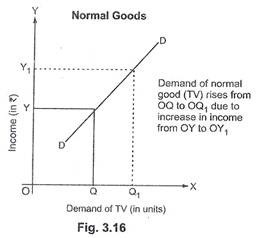
Related Articles:
- Solar System: Keynotes on our Solar System
- 8 Important Facts Regarding the Evolution of Universe | Universe
No comments yet.
Leave a reply click here to cancel reply..
You must be logged in to post a comment.

IMAGES
VIDEO
COMMENTS
500+ Words Essay on Solar System. Our solar system consists of eight planets that revolve around the Sun, which is central to our solar system. These planets have broadly been classified into two categories that are inner planets and outer planets. Mercury, Venus, Earth, and Mars are called inner planets. The inner planets are closer to the Sun ...
Essay on Solar System in 150 Words. Introduction. The Solar System, our cosmic neighborhood, consists of the Sun and all celestial objects gravitationally bound to it. It includes eight planets, their moons, asteroids, comets, and dwarf planets like Pluto. Understanding the Solar System is crucial for unraveling the mysteries of the universe.
The universe is nearly 14 billion years old, our solar system is 4.6 billion years old, life on Earth has existed for maybe 3.8 billion years, and humans have been around for only a few hundred thousand years. In other words, the universe has existed roughly 56,000 times longer than our species has.
100 Words Essay on The Solar System. The solar system comprises all the planets that revolve around the sun. The solar system also contains moons, asteroids, comets, minor planets, and different types of gases and dust. The planets are categorised into two categories: internal planets and outer planets. Mercury, Venus, Earth, Mars, Jupyter ...
The solar system's several billion comets are found mainly in two distinct reservoirs. The more-distant one, called the Oort cloud, is a spherical shell surrounding the solar system at a distance of approximately 50,000 astronomical units (AU)—more than 1,000 times the distance of Pluto's orbit. The other reservoir, the Kuiper belt, is a thick disk-shaped zone whose main concentration ...
Here's a simple solar system 10-line essay perfect for budding astronomers and an essay for primary-class students. 1. The solar system comprises the sun and all the celestial objects around it. 2. There are eight planets: Mercury, Venus, Earth, Mars, Jupiter, Saturn, Uranus, and Neptune. 3.
Known as natural satellites, they orbit planets, dwarf planets, asteroids, and other debris. Among the planets, moons are more common in the outer reaches of the solar system. Mercury and Venus ...
500+ Words Essay on Solar System. The Sun and all other planets and celestial bodies that revolve around it are together called a solar system. Our solar system consists of eight planets and an asteroid belt. These planets are termed inner and outer planets. Earth, Venus, Mercury and Mars are considered inner planets closer to the Sun and ...
Components of the Solar System. At the center of the Solar System lies the Sun, a G-type main-sequence star that accounts for approximately 99.86% of the system's total mass. The Sun's gravitational force binds the Solar System together and drives the dynamics of the celestial bodies within it.
Five facts are: Our Solar System has 8 planets and other dwarf planets. It is roughly 4.5 billion years old. The sun is the biggest star of our solar system and has the highest gravity. Our solar system is 180 Astronomical units in diameter. The end of our solar system can be estimated after the Kuiper belt region.
For example, early studies of astronomy adopted the geocentric model in that they believed that the sun, planets, moon and stars revolved around the Earth, not only that there was also the belief that the Earth was in fact flat (Copernicus, 2009: 83). It is based on this that when examining the established theories on the origins of the solar ...
The universe is a vast and mysterious place, and at the heart of it lies our solar system—a captivating and wondrous collection of celestial bodies. In this essay, we will explore the incredible beauty and fascinating science of our solar system, revealing why it continues to be a source of wonder and inspiration. The Sun: Our Radiant Star
November 1, 2023. Table of Contents. The solar system essay is a remarkable and awe-inspiring essay about encompassing the Sun and its eight major planets, their moons, countless asteroids, and a myriad of comets. At its center is the Sun - a blazing ball of nuclear fusion that sustains life on Earth and all other celestial bodies nearby.
The Solar System [d] is the gravitationally bound system of the Sun and the objects that orbit it. [11] It formed about 4.6 billion years ago when a dense region of a molecular cloud collapsed, forming the Sun and a protoplanetary disc.The Sun is a typical star that maintains a balanced equilibrium by the fusion of hydrogen into helium at its core, releasing this energy from its outer photosphere.
The Solar System is a testament to the universe's vast complexity and beauty. Its study helps us understand our place in the cosmos and inspires us to explore the unknown, fostering scientific advancements. 500 Words Essay on Solar System The Solar System: An Overview.
Essay on Solar System and Planets (500 words) Introduction. Our Solar System - A Small Part of the Universe. Our solar system is huge but nothing compared to the size of the universe. The universe is humongous and is believed to encompass numerous solar systems consisting of several planets, stars and other heavenly bodies.
Universe And Solar System - Free Essay Examples and Topic Ideas . The universe is the vast expanse of all matter and energy, including planets, stars, galaxies, and other celestial objects. It is estimated to be 13.8 billion years old and expanding at an accelerating rate.The solar system is the collection of planets, moons, asteroids, comets ...
Our Solar System Essay. As we have discussed earlier that our solar system consists of the sun and its eight planets, so the name of these planets in the ascending order of distance from the sun are Mercury, Venus, Earth, Mars, Jupiter, Saturn, Uranus, and Neptune. The planets which are nearer to the sun are comparatively smaller than those ...
Essay on Solar System and Planets (500 words) Introduction. Our Solar System - A Small Part of the Universe. Our solar system is huge but nothing compared to the size of the universe. The universe is humongous and is believed to encompass numerous solar systems consisting of several planets, stars and other heavenly bodies.
Essay on Our Universe: Definition, Stars and Solar System! When we look at the sky, we see different kinds of natural bodies like the sun, the stars, the moon, and so on. The natural bodies in the sky are called celestial bodies or heavenly bodies. They are part of our universe. The universe is a huge space which contains everything that exists.
This artist's concept illustrates how tightly the three stars in the system called TIC 290061484 orbit each other. If they were placed at the center of our solar system, all the stars' orbits ...